
































































What makes Bermuda Cancer and Health Centre your best choice for breast care?
Dr. David Green, Bermuda’s only breast specialist is available to meet with you and answer your questions, and through generous fund raising by our community we offer the latest technology in digital imaging.
Our Education Officer can talk with your organisation about breast health and cancer prevention. Our Lending Library provides a large selection of breast health books/DVDs for you to borrow and our Cancer Information Service provides you with current information, treatment options and will help you find local support services. We are pleased to provide these services free of charge.
Bermuda Cancer and Health Centre – a specialist approach to patient care.
Call us today.
Publisher & Editor
Katrina Ball
Business Consultant
Vic Ball
Advertising Sales
Shawnette Smith, Katrina Ball

Website
Advanced Services
Creative Services
Total Marketing & Communications Ltd.

Writers and Contributors
Henry Adderley, Peter Backeberg, Dr. Kuni Frith-Black, Catherine Burns, Doyle Butterfield, Lt.Col. Edward Lamb, Dr. Kimberley Mills, Laura Appert Springham, Nevillene Ball-Wachter, Sara Westhead, Carla Zuill and Godpa
Contributing Photographers
Becky Spencer, Antwan Albouy, Sacha Blackburne, Theresa Millet, Lana Bull, Sharon Wilson, and Sabrina Wilkinson.
Bermuda Parent Magazine is published four times a year. Reader correspondence, photo submissions and editorial submissions are welcome. We reserve the right to edit, reject or comment editorially on all material contributed. No portion of this magazine maybe reproduced without express written consent of the publisher. The opinions expressed by contributors or writers do not necessarily reflect the opinions of this magazine. Distribution of this product does not constitute an endorsement of the products or services herein.
Email: info@bermudaparentmagazine.com Tel: 504-2937 Printed

The focus of this issue of the Bermuda Parent Magazine is on, “Education.” When I refer to “Education”, the conversation stretches beyond mere lip service, which is, telling your child what to do, to a more integrated approach, encompassing life service - that is, being a good example of what to do! When this level of self awareness and understanding is sought and attained by parents and adults in general, children have an opportunity to become more equipped and prepared to make better life decisions. We have a special influence over our children who need to be guided and educated in the area of character, specifically within their mind, their body and their spirit.

Mind - when properly nurtured encourages common sense, unique and original thoughts, creativity, self control, patience, self worth, and a sense of selflessness (service to and for others).
Body - requires good nutrition, sufficient rest, exercise and physical work to operate optimal.
Spirit - shapes our character, moral values and belief systems such as The Golden Rule – ‘Do unto others as you would have them do unto you’.
I would therefore like to challenge you as a reader of this edition, to take that collective journey with Bermuda Parent Magazine in an effort to becoming a better role model for the children in your lives.
Katrina Ball, Editor and mom to Elijah three, and Enoch 8 months



Jahstice

Keitha Grant

Happy 7th Birthday Princess Jahstice. You are so blessed to be in your family’s life. Continue to have God in your heart.

Love & Kisses from Mommy, Daddy, sisters, Nana, Papa & entire family.
October 21st
Keisha
Kori Grant
Happy 5th Birthday Princess Keisha. You are so blessed to be in your family’s life. Continue to have God in your heart.


Love & Kisses from Mommy, Daddy, sisters, Nana, Papa & entire family.
September 20th
Solana Smith
Happy 5th Birthday to Solana - the best daughter EVER!
Love Mommy
August 13th
Aeziah Divine
Happy 3rd Birthday Ziah!
Cristiano Jose
Botelho Hizon

Cristiano, no matter how many birthdays come and go, you’ll always be our little boy. Happy Birthday baby boy, we love you!

Love Mommy, Daddy & Ryan
September 6th
Jacob Hines
Happy 5th Birthday Love Mommy, Daddy, Peyton and all your family and friends!
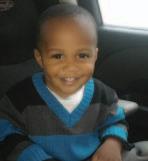

October 1st
Kiori Ameir
Steve Perinchief
Shameir




Omari Somersall
Happy Birthday we love you, From mom and dad and family.
November 5th
November 22nd
Kymel






Mommy & Daddy are sooo proud of the big boy you’ve become this past year –especially with being a new big brother! Have a great and blessed day baby, we love you and are so happy about the little man you’ve become already!! Keep being the amazing child you are and you’re bound to do great things in life!
Lots of love from Mommy & Daddy and the rest of your family in Bermuda, Canada, the US & UK!
October 17th
Kemaria Nicole Bean
Happy 10th Birthday to my Beautiful Angel Kymel!!


I thank God for the beautiful young lady you are growing into and becoming. I pray that you will continue to grow up and strive to do His Will.
I Love You!!!!! Mom September 15th












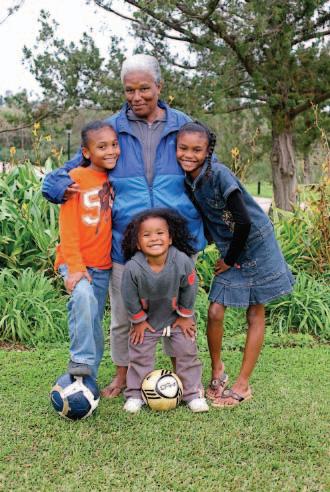





 Karen, Ben, Lila
Eversley, Marchelle & Eliana
Gabriel & Mariah
Karen, Ben, Lila
Eversley, Marchelle & Eliana
Gabriel & Mariah
Any parent who has more than one child will have experienced it – figuring out how to tell your child that mommy is expecting a baby. Thankfully, for the most part, it’s a exciting time, however, it can be somewhat daunting, especially when your older child is still quite young. There are lots of questions bouncing around your head –Will my child understand what’s going on?
Will my child feel left out? Will my two children get along?
We talked to two moms about how they told their first born that mommy was having a new baby!

Mom: Terri Mello
Age: 31
toddler: Asher
Age: He was 4 when I was pregnant but had turned 5 by the time the baby was born.
Baby: Asa
Date Of Birth: December 17, 2011
What was your biggest fear in telling your toddler about the new baby?
really didn’t have any fears in telling Asher the news. He had been asking for a baby brother or sister for a while, so we were more excited than nervous about telling him the news. If had any “fears” about it, it was probably more along the lines of hoping Asher wouldn’t ask about the logistics of where babies come from, or how they get out!
How did your toddler receive the news?
Did they understand?
Asher was very happy about the news. We showed him the ultrasound print-out and told him it was the baby’s very first picture. He was very interested but said he thought it looked like a jellyfish, not a baby! We told him the baby was in my belly, but I’m not sure he really understood at first because I didn’t look any different.
How long did it take for toddler to understand new baby? Was it a process?
Asher didn’t really talk a lot about the baby until my belly actually started showing - think that’s when it really sank in that something was happening. Once we started buying baby
clothes and gear, I think it became clearer to him that there really was a baby coming. Sometimes the baby got hiccups or moved around enough that Asher was able to feel him with his hand on my belly - that was very exciting for him! We also talked a lot about how our lives would change once the baby came, like how Asher would have to learn to be patient if he needed Mommy when she was feeding the baby, and how he’d soon be sharing the back seat of the car with the infant seat.
The end of my pregnancy was undoubtedly hard for Asher because I had complications, so I often had to stay at home to rest and miss some of Asher’s activities or send him and his dad out to things that I’d normally join them in doing. He also endured my going to the hospital several times because of my blood pressure issues, and I know he tired of that quickly. Any time I felt like he was suffering because of my pregnancy, I worried that he would end up resenting the baby for it. Fortunately that did not seem to be the case.
When the baby finally came, how did your toddler react?
Our situation was a little different because the baby ended up coming 7 weeks early and then spent his first month in the Special Care Baby Unit (S.C.B.U.) in the hospital. Because I came home from the hospital before the baby did, the changes were very gradual for Asher. First he learned he had a new baby brother. Then Mommy came home from the hospital and things were basically back to normal except for visiting Asa in the hospital every day for several weeks. Finally Asa was able to come home, and by this time Asher was more than ready for him to join our family. During the final couple weeks of Asa’s SCBU stay, Asher asked every day if the baby could come home yet.
Oh, and one funny thing - when my husband first told Asher he had a new baby brother, he was a little disappointed because he had been hoping for a baby sister. Then, when we told him his name was Asa, Asher said he liked the name but would have rather we named him “Banjo”.
How does your toddler react to the baby now?
The transition was a breeze. was expecting Asher to show some signs of jealousy, or a change in behavior in order to gain attention, or for the baby’s crying to upset him, etc. However, Asher hasn’t had any sort of issues with the new baby. I honestly couldn’t believe how easily he accepted the change. Asher absolutely adores Asa and hasn’t once said anything negative about him. He loves talking to Asa, and Asa loves any attention from his big brother. Because he’s 5, he relishes his role as big brother and always helps when ask. He loves each new stage of babyhood and often says how much he can’t wait for Asa to get old enough to play with him. We’ll see if that changes when Asa is 2 and stealing Asher’s toys! But for now I am so thankful for how well everything has gone.
Mom’s name: T. Ann-Marie Jarrett
Age: 33
toddler: Joshua Smith
Age: 3
estimated Date of Delivery: December 11, 2012
What is or has been your biggest fear in telling your toddler about the baby growing within you?
My biggest fear in telling my toddler about his new baby brother was I felt that he wouldn’t understand what I was talking about. I also feared that he would not be as close to me as he was before I got pregnant. I also didn’t know how to say it. Should buy a book and read it to him, should I take him to the Ultra Sound and when he sees the movements tell him then. Finally I just decided to sit him down on my lap and tell him.
How are you planning to tell your toddler or, if you have told him, how did he receive the news?
I told Joshua when I was about 4 months. He was the last of my close family members that I told. left him until last because I figured he would spill the beans before I could tell others.
And was right he told my nieces that day after I told him. sat him down and told him that I loved him and the he meant the world to me. He smiled and hugged me. I then went on to say that he was going to be a big brother. He looked a bit confused but just went along with me. The next day he went over to visit his aunt and his cousins, while there he took one of my niece’s dolls and carrier and he said he has to take the baby home with him. He named the baby “baby Winston” and he has been taking care of him ever since.
How are you helping to prepare your toddler for the baby’s arrival? It has been a slow start for me in preparing Joshua for the new baby’s arrival as it seems so far away. have talked to some of my friends who have children they have advised me to start now. So I have started to talk to Joshua about being a big brother. I show him that my tummy is getting bigger and he talks to me about his baby brother. Joshua is very clingy. I cannot turn around without him holding onto my legs or arms. I also plan to take him with me when start shopping for the baby so he can pick some things out as well
How do you imagine or hope your toddler will act toward the baby?
I imagine that Joshua will be very protective of his baby brother. He will want to be involved in every aspect of his care. Which can be helpful and worrisome at times. Helpful in that I will have a little helper and that will keep him from feeling left out. Scary in that I will have to be very careful and watchful in as I feel he will try to pick up the baby not knowing the danger that can bring.
Did you receive any advice on how to prepare your toddler for the new baby?And what was it?
Yes, I did receive some great advice from a very good friend of mine on how to prepare Joshua for the new baby. They were as follows:
A. Involve Joshua early in the preparation of the new baby’s arrival.
B. Find out what you are having and name the baby so you and Joshua can refer to the baby by name.
C. Take Joshua to an Ultra Sound appointment so he can see the baby growing inside you.
D. Tell Joshua that his baby brother will bring him a gift and what the gift is when he is released from the hospital.
Discuss with your partner how you’re going to tell your child in advance. If you work together, you can decide how much information to share and when, depending on your own child’s ability to understand, as well their age. This discussion should include questions like, how did the baby get there, and how is it going to get out.
Pregnancy is an abstract concept for little ones – if they can’t see it, they will have a hard time believing it. There are so many awesome books out there, as well as visuals on the internet. One excellent series is the “God’s Design for Sex” series by Stan and Brenna Jones. There are four books, each designed for different ages.
Don’t expect your child to get the whole concept in one sitting. They’re likely to ask the same questions over and over again.
4) Include
Keep your child a part of the process as much as you can. Involve them in discussions about the new baby’s name. Take them shopping so they can buy the new baby a present, like their coming-home outfit. Let them feel the baby kicking in your belly. And give them lots and lots of hugs, always reinforcing that you love them and always will.
Almost every girl fantasizes about the day she becomes a mother for the first time. We’ve seen the videos, watched the movies… the new mommy-to-be goes into labour unexpectedly, rushes to hospital, goes to the labour room face contorted with pain and after a few pushes the new bundle of joy arrives.
A classic scene, yes. But is it every mother’s reality…no. I know firsthand because I had not one, but three c-sections. I have no clue what it’s like to give birth vaginally. When I tell people this, they look at me in surprise. But it’s the truth. I’ve given birth three times via surgery. The first time it was unscheduled. After 27 hours of labour, I was still only one centimeter dilated. With my second, my doctor told me pointedly, if I didn’t ‘drop’ by a certain date, I would have a c-section and with the third she told me from the moment she confirmed I was pregnant, “Do not even think about giving birth naturally. Your uterus could burst during delivery and I am not willing to take the risk.” I was disappointed, but looked at the bigger picture. My children needed me and I was not willing to take the risk. For those who are not quite sure what happens during a c-section, a cesarean section is a type of birth that is done by a surgical incision in the abdomen and uterus to allow a baby or babies to be born safely when a vaginal birth is not the safest route (www.about.com). Should I have another child, I know how he or she will be delivered, but meet one mother who was in the same situation as me but refused to accept that her fate would be the same….
“I never felt disappointed because I had three c-sections,” says Rusheika Furbert, who is the doting mother of four children between the ages of two and eight. While she was pregnant with her first child, she and her husband assumed she would have a natural birth, but that was not the case: “I labored for twentysomething hours, reached nine and half centimeters and did not dilate any further so I ended up having a c-section.”

Mrs. Furbert ended up having two more c-sections within two years but when she became pregnant with her fourth child, out of the blue, she says, a feeling overcame her—she was going to have her child vaginally. “It would not go away. It just seemed to come out of the blue. I think it was God talking to me,” she shares. “I feel that it was God. I told my husband that I thought I needed to have the baby naturally and he said he fully supported me.

”From there, Mrs. Furbert did thorough research to see whether

it was possible to have a vaginal birth after three c-sections (commonly known as VBAC).
She continues: “I didn’t know of anyone who’d done this in Bermuda so I called local doula Fiona Dill and asked her if she knew of anyone who did what I wanted to do. She said to her knowledge, it had not been done in Bermuda.
“I continued to do research and read stories of women who did this overseas but very many did not give birth in the hospital, and of course there were risk factors.”
A few months before she was due to give birth, Mrs. Furbert received a call Ms Dill who said she found a study that revealed there was no heightened risk associated with VBAC of a mother who had one c-section compared one who had three. Once she gathered all of her data, she took it to her obstetrician and told her what she wanted to do. “She didn’t say yes or no,” recalls Mrs. Furbert. “But of course she outlined the risks. But she knew that really wanted to do this. So she agreed on the condition that I met certain requirements which included getting permission from every OBGYN in Bermuda, agreeing
that would only be allowed to labour to a certain amount of time and agreeing to have an internal monitor on the baby. I readily agreed. I was so mentally prepared by the time I gave birth to the baby. I really believe childbirth is 95% mental and five percent physical.”
When the big day arrived, Mrs. Furbert says she was excited, yet relaxed but grew a little nervous once she reached seven centimeters and did not seem to be progressing. The nurses even began prepping for a c-section. “And I did not want that! I started to get a little upset but then I calmed down and I progressed again—without any drugs.” Then, she says, she gave birth, vaginally, to baby Marcus who weighed seven pounds, two ounces. “I was so happy and although had to go through a lot to have a VBAC, I would do it again.” “But we do not plan on having any more children,” she adds with a chuckle. Mrs. Furbert stresses that she is in not advocating for VBACs: “There are risks but I opted to take them. But if you choose to do it, you must do so in consultation with your doctor.”

When Karen and Terry were planning to have their first child, they could not have imagined that they were going to be blessed with twins. When she learned of the news she was ’Thrilled!’ Her husband – well… he was happy but we could not print his chosen words. Karen told Bermuda Parent Magazine she had a great pregnancy albeit for the last few months, dealing with heartburn and extreme swelling of her legs, otherwise, she ‘loved being pregnant’.

Karen found a great support system in her friends and her husband’s family on the island. Although Karen could not be physically present with her own family in the UK she found that skype provided a good way to still be close to them and share in her experiences. The Bermuda’s Amazing Multiples (BAM) group also offered their support by making a ‘Buddy Mom’ available to provide advice and tips for their twins.
Karen planned for a natural birth with as little intervention as possible. Her doctor advised her that she should increase her iron and folic acid intake, as well as have more scans than a mom who was carrying only one baby. During one of Karen’s weekly visits to her doctor, there were signs of preeclampsia. So she was sent over to the hospital for confirmation and the doctor decided that it was best for the babies to be born via cesarean section at 34 weeks. Karen stated that unfortunately she missed the entire birth because of a decision made at the last minute by the doctor meant she had to be under general anesthesia. But Terry was able to be present with the twins from the moment they were born until she returned from surgery.
Both Karen and Terry are very thankful to Dr. Woods, Dr. West, Dr. Roopa and the team at the Special Care Baby Unit (SCBU) at KEMH as well as their own parents for being so supportative. Karen and Terry have especially enjoyed sharing the experience with Madeleine and Liam’s older siblings –Megan and Thomas.
Bermuda Parent Magazine asked Karen what was her advice to others who will be having twins:
Not to watch too many online videos of twins moving around inside a pregnant belly!
Be prepared for your babies to spend time in the SCBU at KEMH

Become a member of BAM –It helps you realize you can do it!
Enjoy the whole experience
– having twins does have its challenges but it’s an absolute joy – times two!
Best Product Purchased: Bouncy chairs
Favourite Food: Spinach


Favourite clothing item: Stretchy maternity dresses
Babies Favourite thing: Cuddles and Boobs full of milk
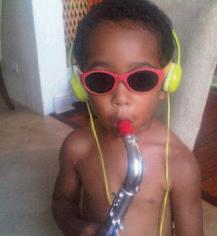
Kindermusik classes offer parents and children an opportunity to learn about the fundamentals of music from the age of 3-4 months, up until age 7. Each class level offers age-appropriate materials and activities to encourage your child’s growth in several areas: language, fine and large motor skills, social and emotional skills, and a lifelong love of music.
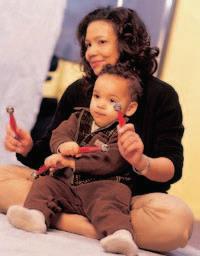


Village class is for babies 3-4 months up to 18 months. Parents learn about baby massage and exercises to do to help develop baby’s brain and motor skills. The class includes exploration of various baby-appropriate instruments, circle dances to interact with the other babies in the class, relaxation time with music, and ideas to implement these activities at home. Babies are at various stages of sitting, crawling, and walking, and activities are adjusted to fit your babies’ stage of development. They learn from watching and interacting with the other babies in the class.
Our Time class is the toddler class, 18 months-3 years old. This class involves more movement to accommodate the busy toddler who loves to explore. The class begins with rhymes, finger play, and lap bounces to encourage talking and vocal sounds from your toddler. Each class has a combination of story time, movement with instruments and music, as well as “together time” to bond with parents. The 3 year old child may be enrolled at school and has become more independent from their parent. The Imagine That class, for 3-5 year olds, allows children to spend time in the classroom without their parent for 30 minutes. Parents come in at the end of the class for “sharing time”, to hear what their child did in the class and a family activity to do at home during the week. Imagine That allows children to become story tellers, use their imagination, and become more competent singers and speakers. Pretend play in the class helps develop language as well as motor and cognitive skills. Students become actively involved in the story telling process, adding their own experiences and thoughts to the class. They are encouraged by the teacher to be creative and express their independence.
Kindermusik for the Young Child expands on the knowledge your child has gained from previous classes and adds a strong musical foundation that can be carried on to study any musical instrument. This class curriculum, for ages 5-7 years old, teaches children the fundamentals of musical notation, gives them an introduction to classical composers as well as music from around the world, and builds on previous Kindermusik classes to prepare your child for formal musical study. Children learn how to play the glockenspiel, recorder,

and dulcimer. Reading, writing, and playing music are all taught at a pace that is age appropriate and in small steps. Students have weekly homework cards that reinforces the concepts learned in each class. Like the Imagine That class, parents come in for the last 15 minutes of class and allow the child to learn from the teacher alone for the first 45 minutes. Every Kindermusik class includes the weekly class instruction and a home materials packet to enhance the classroom experience. Home materials include a family activity booklet, CDs of songs from class, story books, and an instrument. The materials vary depending on which class you are taking and all materials are age-appropriate.
Laura Appert Springham teaches Kindermusik, violin, and viola at Bermuda School of Music. For information about classes at Bermuda School of Music, please visit www.musicschool.bm. If you have questions about Kindermusik or enrollment, you can reach us at kindermusik@musicschool.bm

Saltus provides a nurturing, dynamic and challenging learning environment—from Foundation Year all the way through to our SGY programme, where graduates have earned places in top universities in the US, Canada and the UK.
Apply online at www.saltus.bm. If you have any questions, email admissions@saltus.bm
Our mission is to inspire passion for learning and independent thinking through commitment to academic excellence, personal integrity and service to others.


We chose not to find out the sex of our child during pregnancy. A lot of people do, but I’m glad we didn’t. Mostly because we’d have missed out on all the predictions. It was like they all had to have a go, I’m talking friends, family, co-workers, waiters, maitre’d’s, Italian shoe salesmen, massage therapists, yoga teachers, you name it and they all said we had to go back and tell them they were right… and about half of them were.


Of course everyone had patented and proven methods, like; how the mother is carrying (low, high, in the back, etc.), what the mother is eating (when Deb told a co-worker she was craving fruit the lady wanted to know what type of fruit!), and dangling a needle on a thread over the belly (it moves in circles for girls and back and forth for boys). Each claimed guaranteed accuracy… at least half of the time.
For the record Deb carried high and in front (from behind you would have hardly known she was pregnant), she craved fruit, and the needle initially went back and forth but when
we tried it later it went round and round, and I can confirm that this patented and proven combination of results means… girl.
All of this also speaks to the celebrity-like status held by a pregnant woman. People’s erstwhile inhibitions, or normal selfcenteredness, magically succumb to the big belly. There was a period, say between 24 and 36 weeks, when it seemed like Deb was the life of every party. She just lit up the room; skin glowing, eyes sparkling, energy centered. People could sense it and they wanted to be part of it, to rub the belly and tell her how good she looked. Frankly, it was a little annoying.
Not once, during either of Deb’s pregnancies, did I get even one belly rub.
Moms of toddlers were particularly drawn to the expectant mother. Moms of teenagers have seemingly moved on, moms of infants are way too busy, but toddler moms, they were like moths to the flame. And they fell loosely into three categories. Some wanted to relive what was obviously a magical time in their lives.
By Peter BackebergOthers wanted to give advice. We heard about everything from breastfeeding and cloth diapers to sleeping schedules and school applications.
But the ones to really watch out for, they were looking for catharsis. A chance to relive the horror story, to finally get it off their chests how bad it actually was. The labor, the sleepless nights, the crying, the breastfeeding, and the pain, the toe curling pain. Sure, they tried to make it sound funny, and cute even, but I could tell, this was therapy.
Of course Deb was having none of it. She told people if it wasn’t a positive story she didn’t want to hear it. Sometimes she would just walk away, leaving me to hear it out. Which might explain my pre-labor jitters, but I figured it was part of my job to protect the mother and child. I was also learning that sometimes, as a dad, you’ve just got to do what you’ve got to do.
Buying second-hand children’s products is an affordable way to equip a nursery. But it can also be dangerous as some items can be out of date and no longer safe.
Some children’s products, especially cribs and bassinets have caused deaths and have been the subject of numerous recalls. Check our website www.ca.gov.bm before you purchase any children’s products second-hand.


Complete Nutrition. Complete Peace of Mind.
With school in full swing, your kids are probably busier than ever. Whether they’re gearing up for practice or getting ready for the school play, your kids are counting on the right nutrition to help keep them healthy and focused.


“Trust PediaSure with 23 vitamins and minerals–complete balanced nutrition for your child’s healthy growth and development!”







This fruit (yes, fruit!) not only contains heart-healthy monounsaturated fats — it’s also high in fiber. Plus, they’re easy to prepare: Just slice one up and roll it into a whole-wheat tortilla or add chunks to a salad.
Dried fruits — like apricots, cranberries, raisins, and mangoes — contain a variety of nutrients, including iron. Iron is essential for maintaining healthy blood. Toss a handful of your kids’ favorite dried fruit with some nuts and crunchy cereal for a quick homemade trail mix. It makes a great after-school or on-the-go snack.
This versatile vegetable offers a good dose of potassium, which is vital for the proper functioning of muscles and nerves, among other things. You can bake it into bread, add it to casseroles, or add slices to a pizza.
One of the most nutritious vegetables of all, these guys have substantial amounts of vitamins A, C, and B6. Bake them in strips, cube them in soups, or mash them up to give your kids their daily dose of antioxidants.
Available in dairy or soy (and in an assortment of flavors), yogurt is a perfect calcium-rich treat for strong bones. Plus, it’s easier to digest than milk, making it a great option for lactose-intolerant kids.



One of the hardest things a parent, especially a mom, can have to do is leave their precious bundle of joy in the hands of another person, often a stranger, as they go back to work. Without confidence in your choice of a child care provider, everything in a mom’s world can suffer, from their ability to do their job at work, to their emotional state, and even mom’s own health. That all, of course, will spill out at home, turning everything up-side-down. How do you avoid that? It takes a lot of work and a lot of faith, but a parent who puts in the time to really investigate their childcare options will be able to go back to work with confidence that their little one is in good care.
There are strict laws about who can provide child care. The Department of Health requires that day care providers, both in a private setting and in a day care centre, be certified. Child care providers, those who provide care in their own home or in a private setting, must be registered with the Department of Health and comply with the Children Act of 1998, as well as comply with the conditions of their certificate of registration. They may only care for up to three children at the same time. Day care centers may care for four or more children, but must also have specific adultto-child ratios, depending on the age group. This number may vary, depending on the school. Day Care Centers must also be licensed by the Department of Health, comply with Children Act of 1998 and the Day Care Centre Regulations of 1999, and display their Department of Health licenses at the facility. Those who are not considered child care providers include guardians, foster parents, occasional baby sitters, private nannies and nurseries provided during religious services. That means that foster children of a foster parent, who is also a private day care provider, does not count towards their limits. You can find a relatively comprehensive list of day care providers and day care centers on the Children First website (www.childrenfirstbda.com).
Be sure to make multiple visits to any facility or day care provider before you enroll your child. If a facility will not allow you to visit, do not use the facility – that’s a major warning sign that something is not right. You may even want to make unexpected visits, especially if you choose a facility and place your child there. Be on the lookout to make sure the facility is safe, clean and uncluttered. Find out what the policy is for the regular cleaning of toys, as well as when there is an outbreak of illness, even if it is just runny noses. Find out what the policy is for sick children – when they cannot attend – and how well it is enforced, as well as discipline issues, like temper tantrums, hitting and biting. Make sure that there is adequate space for the children to play and that all toys are sturdy and in good repair. A flyer from the Department of
Health recommends that there should be about 50 square feet per child of outdoor play area, 25 square feet per child of indoor play area and a 2-foot clear walking space between sleeping children in the sleeping area. Finally, make sure that the provider has dangerous materials, like cleaning supplies, medical equipment and kitchens, locked away from children, and that outdoor play areas are properly gated and supervised.

As daycare centers have different policies about the number of children, make sure that you are comfortable with the number of children each staff member is responsible for. Be sure to find out who will be responsible for your child, and if they will always be your child’s carer, or if the staff are rotated throughout classes, as well as if there is a high turn-over of staff. A lack of consistency with who your child interacts with can affect your child’s ability to settle each day. Make sure that the staff actually enjoy working with children and that they aren’t bringing in any ‘luggage’ from their outside lives, which could affect your child, and that staff are actively supervising children, and not leaving them to their own devices. Staff who are interested will make sure there are daily activities that are geared toward your child’s interests and age-appropriate development. It is also important to confirm that your child’s carer is certified with the Department of Health, as well as CPR and First Aid.
Children do much better when there is a plan, and the same goes at day care. Check and see if there is a written plan for play and learning activities. The best schools will have these planned and written, and may include things like the letter, number and color of the week. Also, find out if you will get daily reports, and in what form, about what your child did and didn’t do. Such forms will often include information about everything, right down to whether your child ate his lunch and snacks, to bowl movements. Be sure to see if there is a set daily routine for naps and meals, that there are regular opportunities for both indoor and outdoor play, and what are the policies is for rainy days and television viewing periods
Finally, make sure to bring your own child to meet their potential teacher, to see if they even like them. The caregiver should be someone who is loving and sensitive, and openly embraces and welcomes your child, even if your child is hesitant about a new stranger. Check to see that the caregiver responds appropriately to your own child’s needs, and that, if your child has any special needs, they can personally handle those needs.

Be sure to speak with your child and their carer every day, and visit as often as you can to make sure your child is safe and happy. Support your provider or day care centre as much as possible by volunteering and attending meetings, as well as respecting opening and closing times. If problems arise and you have concerns or complaints, discuss it first with the person in charge and come up, together, with a plan of action to resolve those issues, as well as a follow-up meeting to make sure things are going as planned. However, if you think there are problems that may place your child or other children in danger, report those situations to the Department of Health. If you suspect child abuse, including physical or sexual abuse or neglect, notify the Department of Child and Family Services immediately at 278-9111 or the police. If, in your search for a child care provider, uncover anyone who is breaking the law by either failing to register or by having too many children in their care, report them to the Department of Health.
The Department of Health produces a pamphlet on Child Care providers and is available at most post offices, as well as online on the Bermuda Government website (www.gov.bm) – search under Children and Adolescents on the Department of Health pages.
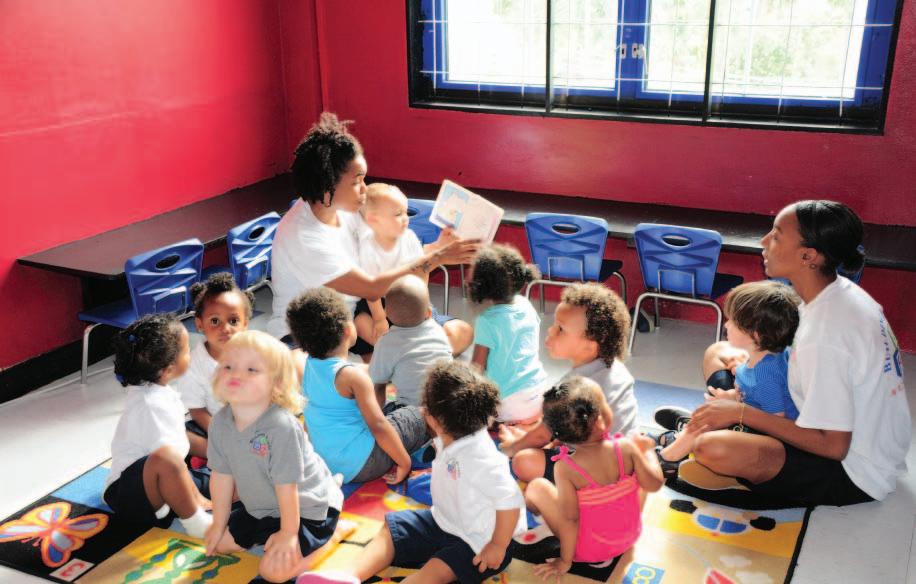 By Doyle C. Butterfield
By Doyle C. Butterfield
•
• Parent and Children’s Book Library
• Toy Library
COMING SOON:
Reading begins at home. Excitement! Enthusiasm! Fun! These all come from the pages of books. Enjoy stories with your child from a very early age. Even newborns can sense your enthusiasm when you read to them. Pick a special time each day for this special task— reading to your child. Learn to be flexible. Read as long as he or she is interested. Don’t force reading. It will work its own magic in time.
1. As you read, don’t be afraid to ask questions. Ask: “Isn’t that a funny thing to say? Would you have said that?”, “What do you think will happen next?”, or “Do you know what a streetcar is?”
2. Answer questions even if they don’t get asked. If you think something is unclear or difficult, stop and clarify it. Don’t worry about breaking the flow of the story—your kids won’t mind.
3. Link stories to everyday life, and use what your child knows about the world to make sense of stories.
4. Have your children make up stories. Be involved by asking, “What happened after?” Make comments such as, “Wow! That was scary!” It will encourage the child to keep going. Be enthusiastic and responsive. Give your child your full attention.
5. To focus attention on the story, ask a lot of what if questions. For example, “What if the bird from the story landed on your nose?” and “What if the princess asked you for something to eat?”
6. Answer your child’s endless why questions. When you say, “I don’t know why the sky is blue; let’s look it up” you show how important books are.
7. Make books important in your life. Teach by example. Read and talk about books, have literature around the house, on coffee tables, etc. Take trips to the library, park, museum, or zoo; surround these events with comments and questions that can be answered using books.
8. Pick books with repeated phrases such as Three Little Pigs. Change your vocal inflection when reading repeated phrases such as, “not by the hair on my chinny-chin-chin.” Soon your child
will join in and you will be huffing and puffing together. Repeating phrases makes the story fun, and helps bring the story to life. It moves the story from flat pages to the imagination.
9. As your child grows more familiar with a story, pause whenever there are repeated phrases and let your child fill in the blanks.
10. Pretend! Pretend! Pretend! Encourage your child to pretend to read, especially the books that contain repetition and rhyme. Ask questions about the story. Be interested. Be excited. “Dad, Nikki is reading!”
Established in 1984, Oxford Learning has grown to include more than 150 locations worldwide. Oxford Learning goes beyond tutoring to help students reach their learning potential, not just for one grade or one year but for a lifetime. The unique programs teach children to learn how to learn. Visit Oxford Learning on-line at www. oxfordlearning.com for complete program information.
• Parent Ed. Curriculum
• Parent Infant Group

• 1,2,3,4 Parents!
• 1,2,3 Magic
COMING SOON:
• Bonding: Early Steps to Attachment
• Sensory Integration


• Move and Groove
• Play and Learning
• CDP Screenings and Other Services Plus more…
It’s our anniversary! One year ago, August, 2011, we opened the doors of The Onionpatch Infant and Day Care Centre located at St. Paul AME Church on the corner of Court and Victoria Streets. We may have started small but have grown tremendously in our first year.


It’s our anniversary! One year ago, August, 2011, we opened the doors of The Onionpatch Infant and Day Care Centre at St. Paul AME Church on the corner of Court and Victoria Streets.
Our students, aged 3 months to 4 years, wear white uniform tops, embroidered with our educational crest and navy bottoms; they are just as bright and smart as they look. Our qualified teachers with years of combined teaching experience engage students daily by implementing the Pinnacle Curriculum using themed lessons that help them understand and explore the world around them.
The Onionpatch staff members actively engage in professional development opportunities to enhance their personal skills and our service delivery as a team. They are members of various educational organizations and this helps staff stay in tune with best practices, locally and internationally.
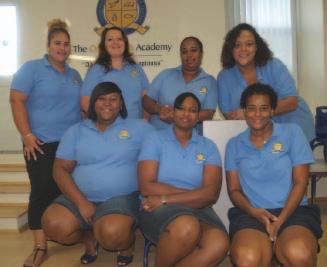
The past year has featured special events such as a Storybook Parade and train ride, Valentine’s Day luncheon, Mother’s Day and Father’s Day luncheons, Sports Day and Easter Egg Hunt and Kite flying. Onionpatch had its first graduation ceremony in June this year. You can find pictures of these events on our website.
We believe that communication is key, thus there is regular communication with parents via a classroom newsletter, general
monthly newsletters, parent-teacher conferences and by e-mail. The Management and Staff remain committed to ensuring the best quality of care, academic growth and social development of those in our care.
For more information about the Onionpatch Academy at St. Paul, please visit our website at www.opacademy.bm or call us at 296 6466 (29-ONION) to make an appointment to visit the facility.

Entrepreneurs are a key component of any market driven economy. These are the innovative risk takers who create products and services that meet the needs and desires of the society. They also stimulate the economy through new jobs, growth and opportunities.
It is therefore incumbent upon the society to foster successive generations of young entrepreneurs. One organization dedicated to doing just that is the appropriately named Youth Entrepreneurship Initiative (YEI), whose mission it is to “bring best-practice enterprise education and youth development programmes to Bermuda”.

YEI’s flagship programme, BizCamp, gives 48 students, every summer, the opportunity to learn, network and develop their business-making skills.
Using the curriculum from the Network for Teaching Entrepreneurship (NFTE) each BizCamp is a week-long intensive delivered by certified instructors and guest lecturers. Budding entrepreneurs are guided through lessons in opportunity recognition, market research, income statements, development of marketing materials (logos, business cards, flyers, etc.) and venture capital proposals. All of which leads to the development of their own BizPlan which they present to a panel of judges at the end of the week.
“The initial objective of BizCamp is to help young people master fundamental business concepts,” says Joe Mahoney, founder and executive director of YEI. “With that accomplished we strive to change their attitudes about education and their vision for their futures.
“Long-term studies of this programme in the U.S have shown student improvement in a number of important areas such as; independent reading, desire to pursue post-secondary education and the overall opinion of small business as a way to make a living.”
YEI has been running the BizCamps since 2000 and over 600 students have completed the programme so far. Mr. Mahoney says he keeps in touch with BizCamp alumni, many of whom are now making their way in the business world.

“One of the key elements of BizCamp is that we bring students back from previous years as both guest speakers and junior instructors. I get calls from former students all the time and it’s great to see the ongoing impact of the camps.”
Mr. Mahoney says he’s certainly seen some interesting ideas incubated over the years, but perhaps the best one was in the very first year.
“Qian Dickerson and Andrew Raynor came up with the idea of installing digital information booths at key tourism spots around the island. It was a good idea,” he says.
“Of course today the students are a little younger (13-18 years-old),” says Mr. Mahnoney. “I try to get them think about the things that are important to them right now, their hobbies and passions, and to build a BizPlan around those.”
Although Mr. Mahoney is not aware of any actual businesses that have sprung from the camp he says it’s the principles that matter most: “Learning the skill-sets is more important than whether or not the business is feasible today.”
In 2011 Rodneyka Browne-Evans-Freeman was awarded the top prize for week one with her plan for photographic services, including special events, weddings and eventually a studio.


“BizCamp is an amazing opportunity to grasp an understanding of what you need to do to start a business,” she explains. “It also teaches about the business world. walked out of there with so much information.”
In fact, this school year Rodneyka was able to put her new found skills to work in the Butterfield Student Challenge, which she and her Cedarbridge Academy teammates won. The Challenges asks participants to create a business plan for a fictitious company and then present it to a panel of judges.
“BizCamp definitely prepared me for the Butterfield Student Challenge,” she confirms. “The case studies we had to review reminded me of creating my own business from BizCamp, and that made it ten-times easier to complete, and win!”
· Transport your baby with best quality fuels from RUBiS


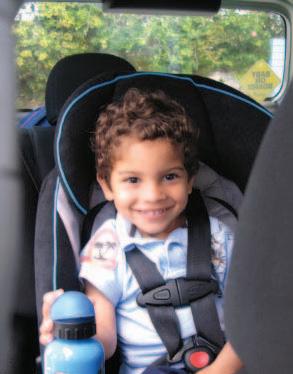

· Our fuels help clean and protect your engine
· With multiple convenient locations you won’t have to settle for less than the best



· We at RUBiS also practice safety starting with our ABC’S – ALWAYS BEING CAREFUL







Doesn’t your pride and joy deserve the best quality?
Parents who encourage their children to partake in additional art, music, dance and drama activities from their early years on into their early teens are setting them up for a better educational experience, studies and educators argue.
The arts are defined by the dictionary as “imaginative, creative, and nonscientific branches of knowledge considered collectively” and traditionally encompass fine art activities such as painting, sculpture and drawing, creative writing, the performance arts and music.
Former local educator Mona Crabtree, now based in the US, said: “In general, the arts as a whole are often viewed as being supplemental to an education, the ‘extra’ in extra-curricular, but certainly not as important as reading, writing and arithmetic and therefore, often not necessary or required as part of a child’s education and all too frequently this entire subdivision of culture is the very first thing to go when schools are strapped for cash.
“This is, in my opinion, one of the worst things that can happen in any given educational setting for the very simple reason that removing any type of learning experience limits the individual and impacts his/her other learning repertoires.”
According to the National Art Education Association, a study conducted by the Collegeboard, a US association of schools and


 By Henry Adderley
By Henry Adderley
The Arts Education Partnership, a US organization which fights for the importance of arts in schools, recently reported in a US national newspaper on how the various art forms benefit students in different ways
• Drama helps with understanding social relationships, complex issues and emotions and improves concentrated thought and story comprehension.
• Music improves math achievement and proficiency, reading and cognitive development; boosts SAT verbal scores and skills for second-language learners.

• Dance helps with creative thinking, originality, elaboration and flexibility and improves expressive skills, social tolerance, selfconfidence and persistence.
• The visual arts improve content and organization of writing; promote sophisticated reading skills and interpretation of text, reasoning about scientific images and reading readiness.
• And combining art forms helps with reading, verbal and math skills and improves the ability to collaborate and higher-order thinking skills.
colleges, looked at the past SAT scores for hundreds of students and showed that students who had taken four years of art and/or music in high school scored 85 points higher on average than those who had taken the minimum requirement of a half year of art or music.
“Clearly, student achievement improves when the arts are a significant part of students’ overall education,” the report concluded.
Mrs. Crabtree contributed: “There is just no way to describe all the ways that the arts support learning, nor enough time to get into any depth, but it’s important to remember that we all learn in different ways.
“It is the rare individual who learns best with one modality of instruction and the one often employed by our educators is geared only toward those children who are good at sitting in their seat quietly listening and writing what the teacher writes on the chalkboard and when asked to recall that information within the lesson or weeks after, demonstrates mastery of the subject.
“But there are visual learners, auditory learners, kinesthetic learners, and more often than not we all learn best using a combination of these three as opposed to just one.”
Mrs. Crabtree said: “Children who learn to play a musical instrument increases their skill level in math with researchers even finding differences in brain development in those children who learn music and those who do not, with the former showing more advanced brain development.
She added: “Drawing is also a precursor to writing, not just in regards to writing the words, but just as important and essential is the story those words create, drawing aids in sequential planning, a vital element to even the simplest of stories which must have a beginning, middle, and end and is learned through the drawing process of first, next and last.”
Mrs. Crabtree continued: “We, as humans, respond to music often with movements of our bodies and some might even look good doing it. Those we call dancers.
“Watching a child dance is probably the most enjoyable moments for me. Their complete abandon, their lack of self consciousness, their inhibitions just make it magical really.” Acting or pretending to be someone else is how children ‘practice’ or get ready for the real world. It is an essential part of development.”
Music can provide a fun and motivating environment for individuals who have special learning needs. Our weekly drumming classes bring together people of all abilities and ages. Benefits include improved coordination, rhythm, listening and communication skills as well as teaching concepts such as cooperation with others, appropriate behavior in a group setting and a sense of personal accomplishment.

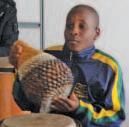

Please join us and our drumming specialist Eddie Ming at WindReach!
For more information call 238-2469 or visit our website www.windreachbermuda.bm

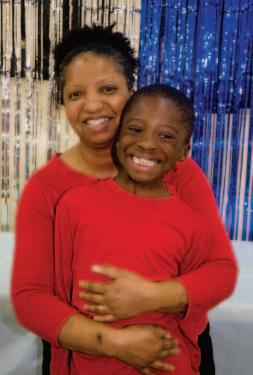
Parents are being called upon like never before to ensure that young lives grow up to be productive contributors to our collective well-being. Furthermore, parents are the first to be held to account for the effects of adolescent misconduct and juvenile delinquency. Nowhere is the demand greater than within our children’s schools.
It is undisputed that a good education is the first line of defense against young people going astray. Hence, the mission of the Bermuda Parents Teachers Students Association (BPTSA), to optimize parental involvement in the educational process to ensure that students achieve social, academic and vocational success. The BPTSA is an umbrella organization with membership open to all Parent Teacher Associations (PTA). The aim of the BPTSA is to coordinate PTAs throughout the island to join forces to devise strategies to improve their participation within their respective schools and to speak with one voice on matters of mutual importance.
Parents are mandated by law in Bermuda to ensure that their children attend school up to the age of 16. They are liable to face criminal penalty for not doing so. Those with school-aged children are also expected to ensure that their children do homework and to support them as is required to help them to make the grade to advance to the next level.


PTA involvement and active participation is therefore indispensable. The PTA connects the parents to the school and the school to the home. Without this connection schools, homes, teachers, parents and students are at a disadvantage. A vital link would be broken. Gone are the days when parents sent their children to schools without ever attending themselves. If this is done today the child is clearly at a disadvantage. Educators and school administrators will not have the necessary lines of communication open to collaborate on the child’s educational progress. Furthermore, Parents are required to assist their children with their schoolwork which is another way of saying that they are required to also assist with teaching them their schoolwork at home. The parent cannot do this effectively without a line of communication with the school and teachers and a way of engaging the educational process to determine what is expected of children in the classroom. This role benefits from a certain degree of PTA involvement as parents often need to address issues collectively to stay abreast of them and even effect change when necessary. It is this involvement that the BPTSA seeks to optimize.
There are day to day occurrences that take place in schools







that Parents are required to be aware of. Educators will discern patterns of student conduct or misconduct that they need to communicate with parents to address the issues at home and in the community to make a difference in the school environment. Case in point is the issue of ‘bullying’ that has become so topical today. Parents are expected to communicate with their children to dissuade them from bullying behavior and to keep abreast of them being bullied. We look to our PTAs for guidance on this issue as it presents itself in our child’s school and to help to devise strategies to address it where we find it.
Parents who keep apace of their children’s education know that the complexity of the educational process has changed. Where students used to have five or six subjects, today it is not uncommon for them to have up to fifteen in a given academic year. And as they progress through the school system the prerequisites for them to graduate to the next level and ultimately on to post-secondary education, becomes increasingly complex. Parents often come together through their PTAs to make sense of this complexity and to support each other in navigating their way through it to assist their children.
Years ago society upheld a moral ethos whereby any adult in relation to a child assumed a parenting role. This was especially true for teachers. The school was sacrosanct. Upon entering through its doors there was a reverence. Teachers were societal icons and students knew to behave themselves in their presence. Much has changed as the gap between secular society and the school narrows and PTAs are marshaled to keep apace and to assist the school to deflect negative influences. This requires a coordinated approach where PTAs can learn from each other and devise strategies that are effective in their respective schools.
The educational system is far more complex than it used to be. The Ministry of Education is comprised of a web of departments and roles that can be daunting for parents to understand and engage. At the school level there are rules and bureaucratic processes that often present daunting challenges when a child is suspended or expelled or subjected to a range of disciplinary measures in between. There are resources available within the system that parents are often not aware of as to helping their
children to develop exceptional skills or to overcome challenges to their education. The BPTSA seeks to marshal PTAs to access information and distribute to parents to assist them to understand their role in that complex process and how to effectively engage the system when necessary.
This brings us to the issues of the quality of education and educational reform. The educational system is constantly having to change to cope with the societal changes around it. Whether it is to reform the curriculum to meet evolving international standards or to restructure the system to cope with domestic social challenges. It is essential for parents to be collectively involved in the process as they have become an integral part of the teaching and learning process. Their most readily available and effective vehicle to do so is their PTA. In this capacity the PTA also becomes the barometer to measure the popularity and even the acceptability of reform. The more informed parents are the more effective they will be and a vital role of the PTA is to provide the necessary information as to the process and the objectives of reform.
The BPTSA has been in existence since September 2010. For more information it can be contacted by email at info@bptsa.bm.
Mount Saint Agnes Academy offers a safe and caring environment where students are nurtured at every level. This coupled with our world-class curriculum, creates an opportunity for our students and parents that is second to none.
We invite all parents/guardians who are interested in enrolling their child/children in MSA, to send in applications for the 2012/13 School Year. Potential students will be academically screened and interviewed by the Principal, together with his or her parent(s) or guardian(s).
Space is limited, so be sure to obtain your application form TODAY either from the School Office or online at www.msa.bm
The School is available for tours, and Faculty and Staff are available to answer any questions that you might have about the school’s religious and academic programs.
19 Dundonald Street, West Hamilton HM 09, Bermuda
Telephone: 441-292-4134
Email: msaoffice@msa.bm
www.msa.bm


The Family Festival of Sail targets children, ages 5 to 15 encouraging them and their families to learn more about boating, sailing, rowing, and organizations which offer these activities.

Several years ago, Mark Watson. CEO of Argo Group International Holdings, Ltd. met with the RBYC Gold Cup Organizing Committee to discuss the possibility of becoming a 2008 presenting sponsor of the Gold Cup and mentioned his desire to be a part of a program that would benefit the Bermuda Community beyond just the support of the Gold Cup event itself. Hence the Festival of Sail unfurled. The program has a broad family appeal and serves the community in a unique way. This is done by providing a learning and entertaining day for all while also exposing those who attended to the joys of sailing and the International Sailing event taking place near by.
The Festival will take place on the final day of the Gold Cup schedule, October 7th and will be held at Barr’s Bay Park, adjacent to the Royal Bermuda Yacht Club. A bridge between RBYC and the park, along with welcome signage, invites all visitors to the Festival to come explore the yacht club.
Many Bermudians are pleased to learn patio dining at RBYC is open to all. There will be live entertainment, fun castles, free face painting, games and food stalls available at the park for a day of fun for the entire family. The Spirit of Bermuda will take part this year for tours and for a specially priced public sail from the Royal Bermuda Yacht Club to the Royal Naval Dockyard, at the conclusion of the event.

In an effort to introduce the joys of sailing to those who attend, three J 105 yachts have been offered by members and friends of the RBYC and will take adults and children accompanied by a guardian
out on 30-minute sails around Hamilton Harbor. Also to encourage youth sailing, children between 10 and 15 years old will have the opportunity to sail around the harbor with an experienced youth sailor in a small sailboat under the guidance of a professional sailing instructor.
The Festival of Sail has become a solid feature of the Gold Cup which couldn’t happen without the generous sponsors. The Festival adds excitement and vibrancy to the Gold Cup event and encourages Bermudian sailors to continue to develop their skills to international standards.
Parents, mark your calendars for this great festival to entertain your young children and teens alike.
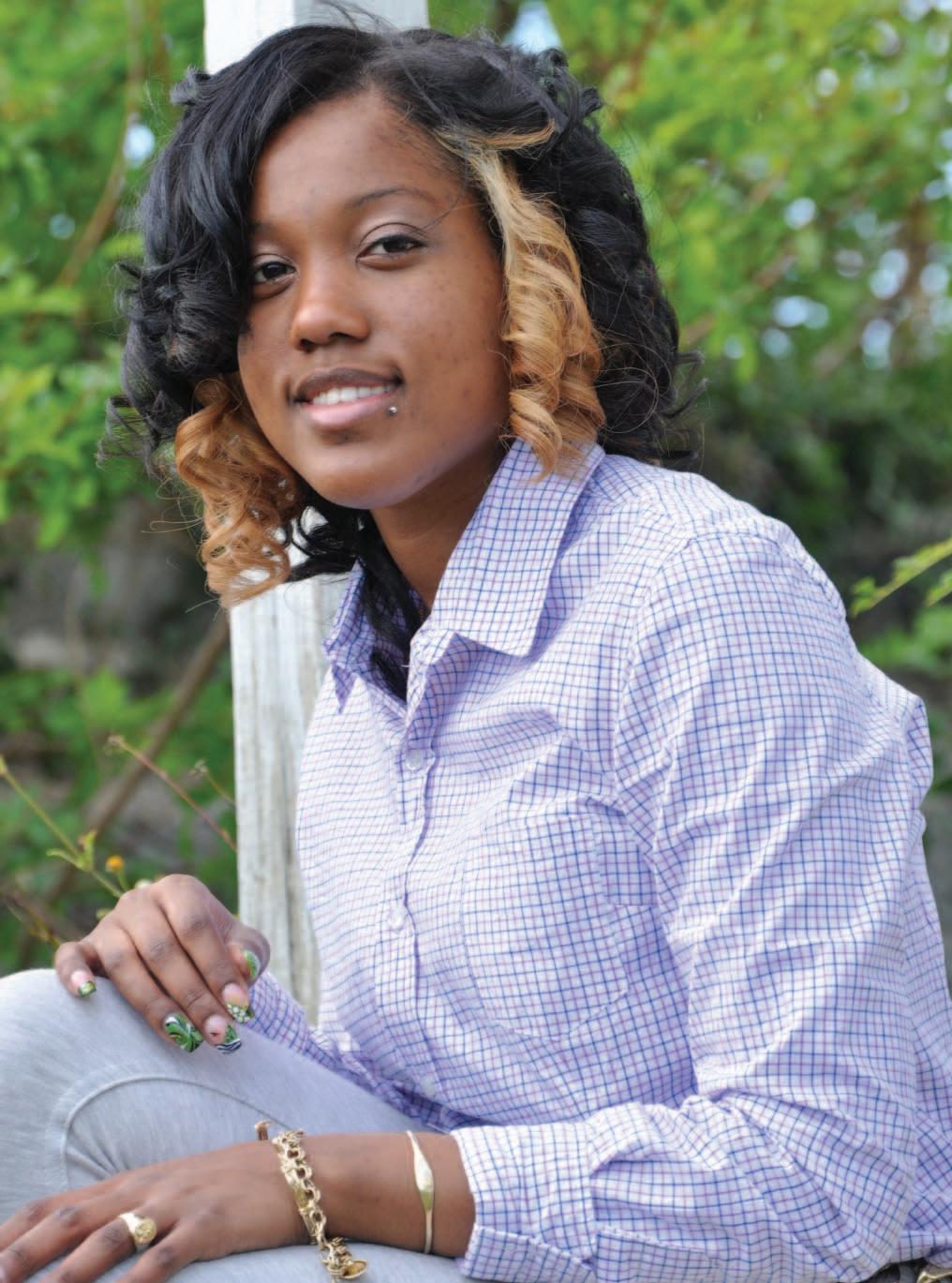
 By Henry Adderley
By Henry Adderley
Every year, parents of young children across the Island make one of the most important decisions that will affect their offspring’s future – where will they go to school.
The choices, at first, appear overwhelming with the selection of public and private schools available across the Island plus overseas boarding school options, and even home schooling opportunities; but for many parents it is eventually the practical considerations that make their decision for them.
Those considerations typically begin with finances but family values, religion and even geography can play a role.

The common perception amongst the majority of people that Bermuda Parent Magazine spoke to is that a private education would be the best choice for their children and, where possible, they seek to take advantage of one of the Island’s private schools.
But with annual tuition costs ranging from $16,000 to $20,000 per year, and per child, many parents cannot afford to do what they would choose to do.
However many have exploited the theory that there are very little differences between public and private schools at the primary level and have chosen to send their children to a Government primary school and then transfer them to a private school when they are older.
One father said: “With higher education, I would trust the private school system more but there are some very good public primary schools that will save you $10,000 to $15,000 a year. That money can be better spent at the higher level. It’s hard to imagine spending $20,000 a year on a seven and a nine year old!” Still others struggle to do what they can to ensure their children receive that private education.
Said one mother: “My eldest daughter is at Bermuda High School and I guess that is where my youngest will go too. It is great; it is a very academic and positive environment. We struggle to pay the fees but it is worth it. I am not even thinking about how we are going to pay for two of them to go there.” She added that while she would have no problem sending her girls to public primary school she was very concerned about what would have happened to them at the middle school age if she could not have transferred them at that age. Those costs have driven some families away from the Island in their desperate search for an affordable quality education for their children.
One Bermudian mother who now lives in the US said: “Private schooling is so expensive it is what prompted us to move to the

US. We couldn’t see making ends meet trying to school two kids privately in Bermuda.”
A father added the same opinion. He said: “My kids are at Gilbert Institute right now and they are doing ok. My wife and I are concerned about the next level of schooling and are looking at moving overseas to live so they can go to a good school without the pressures of cost of living that you have here.” However, sending children to schools abroad to board if the family is not going as well is not always the best course of action, warned one Island educator.
He said: “Some parents think they are going to get a better education for their children at schools overseas but that is not always true. There are some fantastic schools out there for sure but unless your child has specialist needs they may not be right for them.
He continued: “The curriculum you receive at private schools in Bermuda is what you are going to find elsewhere and it is being delivered in the same fashion. However if your child has a very specific need that you want to encourage, then you may want to consider a boarding school that specializes in that area.



His opinion was reinforced by some parents who told Bermuda Parent Magazine that they felt boarding school was not right for every child and had to be considered very carefully before undertaking.

For another mother, the fact that her whole family was Mount Saint Agnes alumni made her school decision for her two children easy. She added: “I also love the Christian atmosphere too.”
For one mother a public school education from start to finish was not a bad experience at all. The mother of three said: “Because I’m a single parent never ventured into the private, boarding or home school options as felt that I couldn’t afford it so why waste time.
“Both my eldest children have been through the public system starting from pre-school right up to senior (Prospect Pre-school, Prospect Primary, Whitney Institute and Cedarbridge Academy). I find that they have an excellent program and they go the extra mile for your child.”
Her son will head off to boarding school in the US this August.
“Due to the lack of opportunities I have encountered, it has made me want the opposite for my children. My oldest is now heading off to boarding school and I think it’s going to be great because it would teach him to be more independent and organized because mommy is not in the next room to do it for him.

“Even though we have a lot here it’s not the same as the boarding schools where you are exposed to so much more. can also use the extra help in shaping my boy into a man and stop him from slipping through the cracks because of life’s obstacles.”
When a child enters middle school they are usually at a peculiar stage of their lives. Not quite mature enough to handle all that awaits them yet too old to be completely childlike. New discoveries are made in many facets of their lives. And unfortunately, this is the time when they may have to realize that making the ‘wrong’ decisions could lead to dire consequences.
This is the case with Jen’s daughter, Nicole.
“Nicole was never considered one of the popular girls at school,” says Jen, whose name is changed to protect her daughter’s identity. “She would often come home complaining about her classmates irritating her but I realized that it was a problem when by her last year of middle school her demeanour really began to change.

“She was coming home like she was agitated. She kept saying that children at school were bothering her and starting to say bad things about her.”
Then one day, according to Jen, her daughter’s antagonists took things on another level.


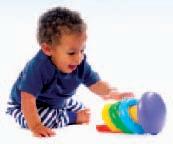

“She was walking on the field during one lunch hour and someone hit her in the back of the head with a rock. When she turned around a group of students were just laughing. She reported it to a teacher but the teacher said nothing could be done because no one saw who threw it.”
Jen recalls another occasion when a student dumped the contents of Nicole’s bag on the classroom floor, “but when she reacted she got in trouble for causing a disturbance.”
The frustrated mother says this is just a snapshot of what her now-14-year-old daughter has had to endure. When asked why she thought her daughter was picked on, she replies: “Because she tries to be friends with everyone, regardless of whether they are older or younger than her. But her so-called friends thought it was weird that she wanted to befriend the younger students. And the bullying became worse when she entered M3”.
“They started taunting her and calling her fat although she isn’t. They would pick on her for everything and started to
destroy her personal property without any remorse. They thought it was funny.”

Jen says although her daughter was handling the bullying well, she was shocked when she discovered that she was also being cyberbullied.
“I was checking my daughter’s Facebook inbox, which is normal for me and there was a message from a boy taunting her. He was also writing mean things on her wall. I replied to him, told him I was her mother and that he needed to leave her alone, to which he replied: ‘I ain’t scared of you.’ He then went on to further torment her and told her that he would punch her in the face for letting me see what he’d written. I reported it to the Police.”
By then Nicole was an emotional and mental wreck, according to her mom: “I came home one day and she was bawling her eyes out. She’d discovered that one of her closest friends, who was also a relative, was in fact going behind her back and saying terrible things about her. She said she really felt alone.”

Jen swiftly got her daughter into counseling and she was diagnosed as being depressed. Although Nicole was prescribed medication to get her through her difficulties, Jen refused to allow her daughter to take them—a move that landed her in hot water.


“I was threatened to have her removed from my home but I held my ground. Why should she have to take drugs when, in my opinion, all that was needed was for her and her schoolmates to work it out?”
And in her continued commitment to end her daughter’s ordeal, Jen approached the parents of each child who was causing Nicole’s distress, all of whom were supportive. To her amazement, the bullying abated and her daughter’s demeanor began to change for the better.
Nicole is guarded but Jen is happy to see her daughter smiling again.
“They have stopped for now and I pray it doesn’t pick back up. My daughter is at peace and a very forgiving person so now she acts as if it never happened….but time will tell.”
In recent years, technology has opened many doors for children, particularly those with special needs. In fact, technology can be a great equalizer for children with disabilities that would otherwise prevent full participation at home and in school. This is most evident in the case of children with mobility, hearing, vision or communication impairments, but is also true for kids with limitations in cognition and perception. With technology, children who are physically unable to speak can communicate with spoken language. Using a portable voice synthesizer, for instance, a child can ask and respond to questions, overcome a physical obstacle that may have forced placement in a special segregated classroom or required a full-time instructional aide or interpreter to provide “a voice.”
All of the above examples (and more) are known as “assistive technology,” which is defined as any kind of technology and/or tool that can be used to enhance the quality of life and functional independence of a child with special needs. The potential range of assistive technology devices is incredibly large, and both “hightech” and “low-tech” devices are included. High-tech devices may be computers, electronic equipment, or software. Low-tech devices are manually, not electronically, operated, and includes devices such as pencil grips, mouth sticks, and mechanical hoists.
One of the most accessible and popular forms of assistive technology for parents is the Apple iPad. Since its debut in April 2010, the iPad has become a popular therapeutic tool for children with special needs of all kinds. The iPad is, generally speaking, less expensive than computers and other gadgets specifically designed to help disabled people speak, read or write. Though no one keeps track of exactly how many are used this way, studies are under way to test their effectiveness, which varies widely depending on diagnosis.
Many parents have found that their children are for the first time engaged in learning, and consider the touch pad device “a near miracle”. There are some drawbacks, however, such as sound, which can be too low in crowded, noisy areas. Some parents also find iPads not quite robust as some other devices specifically designed for special needs populations. Nonetheless, the benefits appear to outweigh the criticisms, and one of the main reasons for their widespread popularity for special needs children is the vast number of applications for all kinds of special needs. In fact, next time you visit the App Store, make a point of finding a category just
School doesn’t always have to be a struggle. In fact, some kids love it—and not just because of friends or good grades. They love it because they’re willing to try, and because they feel confident in their ability to learn. All kids can love school. It just takes Oxford Learning to show them how. Better confidence. Better motivation. Better grades.
Call
for Special Education Apps. The apps that have been developed specifically for children with special needs are wide ranging, from basic to quite sophisticated, and generally are all quite affordable. To give you a flavour of the kinds of apps that may be worth checking out, here are my “top five” picks
“Proloquo2Go” is the best app to augment communication for students who are non-verbal.


“Wheels on the Bus” is the best song and interactive reading app.

“Dragon Dictation” is the best voice recognition app to facilitate the writing process.

“Percentally” is the best app to collect data for special education goals.

“iReward” is the best app to reinforce good behavior.


To learn more about iPad apps for children with special needs, view a list of over 200 apps with descriptions as posted by Eric Sailers.




Assistive technology is providing more powerful and efficient tools for parents and teachers who work with children with disabilities. These tools enable parents and teachers to offer new and more effective means of learning while individualizing instruction to the broad range of student learning needs. The iPad is but one example of effective and accessible tools that parents can use to help their children develop speech, reading, writing and math skills.
Nevillene Ball-Wachter holds a Masters degree in education with a special emphasis on instructive technology She is a special education specialist for the Ministry of Education, is leading a camp for special needs children at WindReach this summer, and is a devoted mother of four children .
Bermuda 441.296.6060
66 King Street Hamilton, Bermuda, HM12
Coupon applies to ClearWater’s KwikIII zerowaste under-counter water filtration system and may not be combined with any other offers.


valid until 10/31/12 or while supplies last
Just call 236.3388 or e-mail kickthebottle@clearwater.bm
Getting a new school year off to a good start can influence your child’s attitude, confidence, and performance both socially and academically. The transition from August to September can be difficult for both children and parents. Even children who are eager to return to class must adjust to the greater levels of activity, structure and, for some, pressures associated with school life. Here are a few suggestions to help ease the transition and promote a successful school experience.
Good physical and emotional health. Be sure your child is in good physical and emotional health. Schedule checkups early with your child’s doctor and dentist. Addressing any potential issues early in the school year can help your child to be at their best.
Review all of the information. Review the material sent by the school as soon as it arrives These packets may include important information about your child’s teacher, schedules, school supply requirements, sign-up dates for after-school sports and activities and school calendar dates.
Mark your calendar. Make note of important dates, especially backto-school nights. This may be even more important if you have children in more than one school and need to juggle obligations.
Re-establish the bedtime mealtime routines. Plan to re-establish the bedtime and mealtime routines. Prepare your child for this change by talking with them about the benefits of school routines in terms of not becoming over-tired or overwhelmed by school work.
Turn off the TV. Encourage your child to play quiet games, do puzzles, flash cards, color, or read as early morning activities instead of watching television. This will help ease your child into the learning process and school routine.
Designate a clear place to do homework. Older children should have an option of studying in their room or a quiet area of the house. Younger children usually need an area set aside in the family room or kitchen to facilitate adult monitoring, support, and encouragement.
Select a spot to keep backpacks and lunch boxes. Designate a spot for your children to place their school belongings as well as a place to put important notices and information sent home for you to see.
Freeze a few easy dinners. It will be much easier on you if you have dinner prepared so that meal preparation will not add to household tensions during the first few weeks of school.

Go for quality not quantity. Your child will benefit most from one or two activities that are fun, offer healthy social interaction, offer academic support and teach new skills. Too much scheduled time can be stressful, especially for younger children, and may make it harder to concentrate on schoolwork. Remember to leave time for the nurturing family relationships that they crave. When evaluating extracurricular activities, consider your family schedule and personal energy level. Multiple activities per child may be too much to manage, particularly if the activities have overlapping times, or require your attendance. Find out from the school or teacher which days will be heavy homework or test study days and schedule extracurricular activities accordingly.
If your child does not want to participate in regular, organized extracurricular activities, you may want to consider other options to help build interest and social skills. For example, check out the local library for monthly reading programmes, or talk to other parents and schedule regular play dates with their children.
These recommendations can contribute to a positive and productive school experience for most children. Some children may exhibit more extreme opposition to or fear of school or may be coping with more specific learning or behavioural difficulties.
If your child demonstrates problems that seem extreme, or go on for a long time, you may want to contact the school to set up an appointment to meet with your child’s teachers and school counsellor. They may be able to offer more insight or refer you to someone who can help. They may also suggest other resource within the school and the community to help you help your child. Almost all children try out a variety of behaviours but it is generally wise not to overreact. More often than not, time and a few support strategies will help them to get on track. Most children are wonderfully resilient and, with your love encouragement, will thrive throughout their school experience.

If you would like more information on this topic you can contact Family Centre and ask to speak with the Community Support Worker at 232-1116
Reference: National Association of School Psychologists
parents are having the courage to raise their hands and ask for our help, yet Family Centre won’t have the capacity to meet these needs without you. We need you to step up and help out by volunteering at our fundraising activities and events so we can ensure we’re able to keep providing these much needed services.
families need your help. Please register to become a volunteer today.
Crime Stoppers Bermuda is a registered Bermuda charity (No. 410) run entirely by civilian volunteers. The success of the program is due to it’s tripartite nature involving Law Enforcement, Media and the Community.

So said father of two Brian, who has been separated from his wife Sandra for seven years, yet remains active on a daily basis in rearing his son and daughter.
“My relationship with Sandra is good,” he said. “When we separated we agreed we would not argue about money or the kids and we have been able to keep that up because we communicate well and that is the key.”
Brian and Sandra used to follow a set rotation of a week with the kids, then a week without when they first split up but over time that has relaxed.

Said Brian: “Eddie, our son, flip flops back and forth between my house and Sandra’s all the time now. The kids go through stages when they want to be with their mother more and then they want to be with me more. He typically wants to be with me on the weekends and sometimes he’ll stay at my house for weeks. When don’t have the kids it is really tough but you have to understand that sometimes they want to be with me and sometimes they want to be with their mum.
“But no matter where they are, Sandra and I mirror each other’s rules so there is consistency around bedtimes, what they are allowed to do and what they are allowed to watch on television for instance.
“If there’s a need to discipline one of the children,” continued Brian, “Sandra and I will either meet to talk about it or speak to each other on the phone and come up with a plan.”



Brian said that he and Sandra try to attend all the children’s events together and present a united front when matters arise at school or elsewhere that involve their offspring.
“We had some challenges with Eddie at his school this year,” recalled Brian, “so Sandra and I went and met with his teacher, to figure out what we needed to do and then we dealt with it together. His teacher said that she would never have known we were separated by the way we handled the problem.
By Henry Adderley“That’s our goal,” continued Brian. “We know we are going to be in each others lives so we are making it work. Sure the kids are going to be affected in some dimension but we both work hard to make it minimal and also to make sure they both know they are loved. In fact I just finished helping Sandra find a house to rent.”
Mother of three Rachel also benefits from maintaining a relationship with the father of her two eldest boys.
“I have three boys and two of them have been living between my home and their father’s house for the past seven years. They are 13 and 17 years old respectively.”

She has encouraged the relationship between them and their father since day one, she noted.
“I have no problem with this because boys need their fathers and I want them to have a relationship.”
And it provides her with a break, added Rachel.
“It works because the boys have one on one quality time with each of us and we also get a break from our parenting responsibilities every once in a while.”
“They spend about 24 hours a week at his house and the rest of the time they are at my house or at a friend’s place,” she continued.
“They do their laundry and homework at his house and cut his grass and at my house they wash the dishes, take out the trash, help me pay the bills and do the grocery shopping on occasion.
The boys are very active at school and on different sporting teams and she and the boys’ father try to attend all their events together.
It’s not always easy on her sons however.
She said: “The hardest thing on the boys is probably the different rules they have to follow as they are not the same as if they were under one roof. Their father does things one way and do them another.”
Every telephone call to the Crime Stoppers Bermuda 24-Hour Hotline is treated in the strictest of confidence and callers are not required, nor asked, for their name. All calls are answered overseas by the Miami-Dade County Crime Stoppers in Miami, Florida, USA which ensures anonymity. Likewise, all tips left through our encrypted web page are totally anonymous. These security measures enable anyone with details of criminal activity to report such information without fear of exposure or retribution. Information is then transferred back to Crime Stoppers Bermuda electronically and relayed to the relevant law enforcement agencies. In many instances, the law enforcement agencies are unaware that they are working on a Crime Stoppers Bermuda tip, which further protects the integrity of the information and anonymity of the caller.

Rewards of up to $2,000 are also offered for information leading to a successful arrest or seizure of illegal drugs and firearms. Rewards are also given for all other crimes for which there is an arrest and conviction.
All funds raised for the local program go directly into promoting the 800-8477 (TIPS) or 1-800-623-8477 (TIPS) telephone numbers and funding rewards.

We encourage you to visit our webpage at www.crimestoppers.bm, become a fan on Facebook and follow us on Twitter @BDACrimeStop

Communication is the key to a successful relationship and your children are involved whether you and your spouse are together or separated.





Applied Behaviour Analysis is a branch of psychological sciences that is dedicated to the understanding and advancement of human behaviour (Cooper, Heron & Heward, 2007). Behaviour Analysts strive to improve human behaviour through the examination, study and manipulation of environmental variables that shape the behaviours of human and that of all living organisms. When engaging in the science of Applied Behaviour Analysis, practitioners look to understand the connection between environmental variables and their impact on behaviour. Once we understand how stimuli in the environment are impacting behaviours, we can manipulate those stimuli and intervene to improve socially significant behaviours.
Imagine you are in a toy store. Your child sees a plethora of bright, buzzing, spinning and whirring toys he would just love to get his hands on. He asks you for the toy and you say “no.” Your utterance of the word “no” (a stimulus) sends him into a crying and tantrum fit that includes yelling, kicking and screaming bloody murder (behaviours). The shop keeper and all the patrons in the store are looking at you as if you’ve clearly failed parenting 101 (more environmental stimuli). In an effort to save your dignity and the ears of the others in the shop you concede to your son’s demand and give him the toy for which he has been screaming (consequence). The crying ceases and all is well with the world; that is at least until the next trip to the toy store. In the field of applied behaviour analysis if we were to analyze the situation, we would say that you as mother have become a Discriminative Stimulus (SD) in which tantrum behaviours from your son have been reinforced. We would describe your son’s behaviour of tantrum as having a function to get something tangible and explain that he uses this behaviour when he wants to get something because his behavioural history suggests that the behaviour of tantrum is a indeed a very effective tool for getting things. It’s worked for him his whole life.
Now let us switch the scenario. Let’s say the boy is in the toy store with his father. He asks for the toy and his father tells him “no.” The child does not emit the yelling or tantrum behaviours in the presence of his father. In our field we would say that the boys’ father is a Discriminated Punisher (SP) in which tantrum and yelling and screaming behaviour have been punished. When behaviour analysts use the word punish, we are not referring to spanking, but simply to a stimuli that decreases the likelihood that the behavior will occur again. We would explain that efforts to use tantrum and screaming to get what he wants with his father have not been reinforced and the
 By Dr. Kimberley Mills
By Dr. Kimberley Mills
had the pleasure of working with a corporate trainer who revolutionizes the workings of an industry and increases employee productivity, organizational and fiscal health and increases product output? Chances are the trainer is using applied behaviour analytic techniques to shape and change the behaviour of the organization.
Applied Behavior Analysis is a power system of scientific technologies that have been changing and shaping the behaviour of human organisms since the beginning of time. These behavioral contingencies have always existed. They weren’t created, they were discovered. From the 1930’s onward, scientists and practitioners have developed a greater understanding of these behavioral technologies and their ability to change the behaviour of living organisms.
I will be presenting a series of articles on Applied Behaviour Analysis over the next year so please look out for them and gain a better understanding of how these principles can improve the lives of you and your family. For more information on Applied behavior Analysis or with questions about how to get involved with the Bermuda Association for Behaviour Analysis please visit www.kimberlyRmills.com
child has learned stimulus discrimination between different stimuli (mom and dad) and is using this discrimination to employ certain strategies in certain settings where reinforcement is likely. Is this child being manipulative? Not really. The child is just using the tools that he/she has learned since coming out of the womb for getting the things they wanted and needed like attention, food to eat, toys, to alleviate or enhance and internal experience or to escape or avoid an unpleasant condition. And guess what parents? You taught these tools to your child! The good news is that there are things you may have inadvertently taught your child that can be re-taught, retrained and unlearned. That’s what Applied Behaviour Analysis is for. Once parents and caregivers recognize how environmental stimuli are constantly shaping not only the behaviour of children, but our own behaviour, we can begin to make lasting and meaningful changes in our lives and in the lives of those we parents, serve and care for.
So who uses Applied Behaviour Analysis? Principles of ABA can be seen operating all over the world. Practitioners of ABA can be seen in the world of developmental disabilities. Tomorrow’s Voices as an example uses an ABA model to work with increasing the adaptive behaviours and decreasing the maladaptive behaviours of youth with autism and other developmental disabilities. Have you ever seen the television show, The Super Nanny? She is using principles of ABA to shape and change the behaviours of the children and parents on her television show. Have you ever been to the Sea World or to the Circus? Have you ever wondered how the trainers get the animals to do the things that they do? They are using principles of Applied Behaviour Analysis to shape and change the behaviors of the animals. Have you ever
Norwex has developed a unique technology that combines an antibacterial silver- based agent with our microfiber. The antibacterial agent is actually embedded inside the tiny microfiber. It destroys the bacteria that it picks up in its fibers.


Contact: M.R.C.· Distributor of Norwex Products


Email: mrc@logic.bm
Tel: 296-6833

All beans and pulses are rich in complex carbs, plant based protein and fiber - and chick peas (garbanzo beans) are no exception. Chick peas are packed with folic acid with new research indicating they are good for blood sugar control too. The problem is that once your kids have discovered chocolate chip cookies and snow cones, it’s hard to get them to eat something as healthy as a chick pea!
While I suggest you do offer the real deal to kids as part of regular meals (pop them in soups, casseroles, stir fry or salad for example) you can also try a stealth tactic. I know some people frown upon lying to children but in a world where Santa exists (not to mention the tooth fairy) I think a little of “what you don’t know won’t hurt you” goes a long way. Especially if this means you can relax at the dinner table, knowing your little ones are getting everything they need.
This pasta hummus recipe is great for many reasons. It’s a good way to include protein for kids going through a no meat/chicken/fish phase. It’s also super quick to make, taking just ten minutes and one pan (the less washing up the better.) If your children will eat vegetables with no fuss, add frozen peas to the pasta in the last few minutes of cooking time to boost their 5-a-day.
have never known a child to reject this dish (nothing short of miraculous) but it you have a very fussy eater, start with just a little hummus, building it up as their taste buds adjust. For more adventurous kids who like hummus and enjoy cooking too, get them involved and let them stir in the sauce. Have fun!
By Catherine BurnsCell: 336-6833

Ingredients:
• Wholewheat, quinoa or brown rice pasta (one serving per person)

• 1 heaped tablespoon hummus per person (approx.)
• 3 tablespoons of tomato-based pasta sauce per person (approx.) e.g. Amy’s low sodium Family Marinara.
• Black pepper
Method:
1. Cook the pasta as instructed on the packet, drain.
2. Stir in the hummus and pasta sauce over a medium heat. Add more or less of either, depending on how “tomatoey” you like it. Heat through.
3. Serve as is or with green salad/veg and some fresh black pepper.
Catherine Burns BA Hons, Dip ION is a fully qualified Nutritional Therapist trained by the Institute for Optimum Nutrition in the U.K. and is the Managing Director of Natural Ltd. www.natural.bm / 236-7511.
Did you know that body temperatures fluctuate by one to two degrees throughout the day?
Your body temperature is generally lower before daybreak and a little higher during the afternoon. Body temperatures also vary according to age.
When the body presents with a fever it is defending itself from foreign invaders like viruses and bacteria. High body temperatures also represent signs of infection. Infection fighting cells of the immune system are being called in to go to war and defend the body against invaders.
Normally mild fevers are a natural way for the body to rid itself of toxic substances and invaders in adults. However, children’s bodies react differently when they present with a fever. A small rise in body temperature could indicate a very serious health issue in a child. It is best to pay close attention to the physical signs your child displays when he or she has a fever.
There are a number of reasons fevers occur in children. From teething to viruses children will be exposed to fevers at some point and time in their young lives. Work on lowering your child’s fever as quickly as possible. Left untreated fevers can set the stage for dangerous health complications. Introduce lots of fluids that contain electrolytes to prevent dehydration and use a cool compress on the forehead and around the neck. Make sure your child gets lots of rest and encourage your child to eat small portions of foods like broths and other soft foods. A lukewarm herbal bath can also help to reduce fevers.
Over the counter medications are generally administered to reduce fevers. It is not advisable to give very young children aspirin as it can cause an allergic reaction. Serious side effects have occurred as a result of administering aspirin to very young children including Reye’s syndrome. Reye’s syndrome is a condition known to cause brain inflammation and vomiting and can be fatal.
Consult your doctor or pediatrician if you suspect that there may be other contributing health issues related to a fever. If an adult or child presents with a fever when the doctor’s office is closed you may want to follow up with a visit to the hospital.
An emergency room visit is advisable if the following symptoms present:
Babies with fever under the age of 3 months
Senior citizens presenting with a high fever for longer than a 2 day period
Persons who are undergoing chemotherapy or radiation therapy
Persons who live with immunocompromised conditions such as diabetes, sickle cell and HIV
Persons with long-term steroid use
If a fever last longer than 4-5 days
If a fever is over 104 degrees
If a person looks very ill or has difficulty breathing, along with changes in behavior, headaches and neck stiffness
Infants and children up to 2 years of age should receive rectal temperature readings because they are deemed to be the most accurate. Using a thermometer placed under the armpit can help ascertain whether or not a fever exists. Children ranging in ages 2-5 years old should have temperature readings taken rectally, in the ear or under the armpit.

Natural and Homeopathic remedies tend to be more gentle than OTC medications with children and adults and pose less side effects. You can find natural and homeopathic remedies at your local health food store. Here are a few suggestions for herbs that help to reduce fevers:
White Willow, Meadowsweet, Yarrow, Peppermint, Ginger, Echinacea, Catnip and Lemongrass. Be sure to consult with a health care provider when administering herbal remedies to break a fever. You want to be sure you are using the correct dosage and combination of herbs or homeopathic remedy.
WARNING:
Never combine herbal remedies with prescription medications. If you are not sure of the correct dosage to administer to an adult or child consult with a health care provider who can guide and direct you. Do not take herbal remedies to break a fever if you are pregnant. Check with a health care provider first if you wish to use herbal remedies for any health issue while pregnant.
Kuni Frith-Black has been an advocate for holistic approaches to health and wellbeing for almost three decades.
Kuni earned her Doctor of Naturopathy Degree for Health Care Professionals through Clayton College of Natural Health and her B.A. degree in Counselling Psychology and Holistic Studies from Vermont College. She is a Clinically Certified Hypnotherapist, a certified Auricular Therapist and a Master Reiki Practitioner with 15 years experience as a holistic health practitioner.
In August 2008, Kuni joined the practice of Dr. Femi Bada as a naturopathic consultant where traditional allopathic medicine was combined with complimentary/alternative medicine to create the ultimate healing experience. From August 2010 through to February 2012 Kuni worked as the Executive Director for the Bermuda Diabetes Association.
She is currently the host of the popular radio show “Health Corner” every Tuesday from 11:00am – 12:00 noon on FM 89. Kuni is a prolific educator and conducts health presentations and talks throughout the island. Kuni has been working with the Department of Community and Cultural Affairs for the last three years during Rendezvous Season. She organizes talks and tours on medicinal plants and Bermudian Folk Remedies along the railway trail in Paget.
Kuni teaches herb classes and traditional Bermudian folk remedies, along with operating an herbal apothecary. Her favorite pastimes are cooking, gardening, nature walks and writing health articles. She also enjoys meeting like minded people who are committed to educating communities on living well and staying healthy.
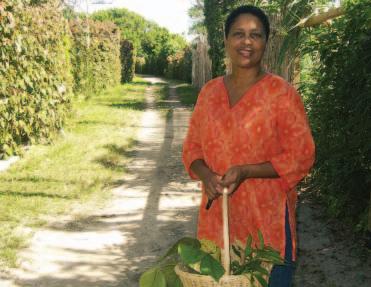
You can contact Dr. Kuni Frith-Black at 238-1227
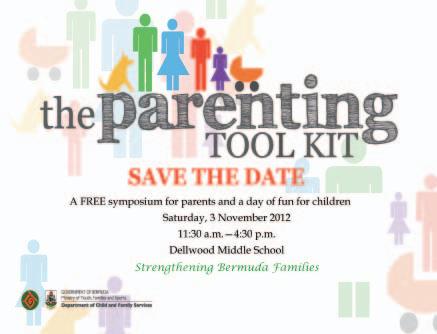

• 1 cup Skippy® Creamy or Super Chunk® Peanut Butter


• 1 cup sugar
• 1 egg, slightly beaten
• 1 tsp. vanilla extract
PREHEAT oven to 325°. Combine all ingredients in medium bowl. Shape dough into 1-inch balls. Arrange cookies on ungreased baking sheets 2 inches apart. Gently flatten each cookie and press crisscross pattern into top with fork. BAKE 8 minutes or until lightly browned and slightly puffed. Immediately top, if desired, with sprinkles, chocolate chips or chocolate candies. COOL completely on wire rack before removing from baking sheet.
As part of a balanced diet, Skippy is good nutrition that is simple and delicious!
Each gram of Skippy® Peanut Butter has 7 grams of protein to help fuel the fun.
For more fun recipes, visit WWW.PEANUTBUTTER.COM
www.bv.bm
Follow us on
The Department of Parks is informing the general public that as of the 1st November 2012, the 1988 Bermuda National Park Regulations have changed regarding dogs and horses on the public beaches, under the jurisdiction of the 1986 Bermuda National Parks Act.


Dogs are permitted to be on the public beaches until the 31st March 2013.
The dogs must be on a leash at all times.
During this period until the 30th April 2013 horses are NOT permitted on the following beaches at any time:
2. Elbow Beach Park
3. Horseshoe Bay Beach ( South Shore Park )
The cooperation of dog kennel operators, and the owners of dogs, in abiding by the regulations, is greatly appreciated.
6. No person shall, being the owner of,or in control of, a dog –

(a) subject to paragraph (b), bring such dog unleashed on to any protected area; or
(b) bring such dog on to any public beach in a protected area during the period from the 1st April to the 31st October in any year; or
(c) subject to paragraph (b), bring such dog on to any protected area using a leash greater than three meters in length, or
(d) cause, permit or suffer such dog to annoy or disturb any person in any protected area.
Also by signs and notice: No dogs in the Main Show Ring at Botanical Gardens and no dogs in Coopers Island Nature Reserve.
1. (1) Subject to paragraph (2), no person shall, in any protected area
(a) take a horse other than on designated roadways or trails;
(b) ride a horse in a manner likely to cause danger to any person therein;
(c) ride a horse at a speed greater than fifteen kilometers per hour;
(d) being in control of a horse leave the horse unattended when it is not properly tied to some suitable object, other than a tree or shrub;
(e) lead from horse-back a riderless horse which is not appropriately bridled;
(f) lunge or break in any horse;
(g) ride a horse in excess of a slow walk when passing in the vicinity of other members of the public using the area.
BERMUDA NATIONAL PARKS AMENDMENT REGULATIONS 1994

In exercise of the powers conferred upon the Minister by section 25 of the Bermuda National parks Act 1986, the following regulations are hereby made: -
Amendment of BR 49/1988
5 (2) During the period –

(a) 1st November to 30th April in any year no person shall take or ride a horse on Horseshoe Bay, John Smith’s Bay and Elbow Beach but may take or ride a horse on all other public beaches below the high water mark at any time;
(b) 1st May to 31st October in any year no person shall take or ride a horse on Horseshoe Bay, Johns Smith’s Bay, Elbow Beach and Shelly Bay but may take or ride a horse on all other public beaches below the high water mark between the hours or 5:00 a.m. and 8:00 a.m.
is greatly appreciated
If further information is required please contact the Department of Parks at 236-5902.
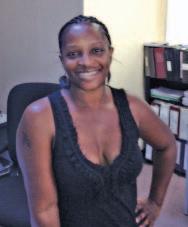
 By Carla Zuill
By Carla Zuill
The world has surely changed and will continue to change. I remember entertaining myself for hours playing jacks or seven up without the desire to tell my friends my goings on as they happened. But, today’s generation of youth seem to have the constant desire to stay connected, whether through BBM, SMS, Facebook or Twitter. If someone gave me a nickel each time one of my four kids has asked for a mobile phone, I’d be living large like Oprah right about now. Luckily their ages have always warranted obvious replies such as, “You’re too young for a phone…” or “You can have one when you get a job…” or “You don’t need a phone, you go everywhere with me!” Unfortunately, our babies grow up and turn into teenagers and before you know it your baby is rockin’ a BlackBerry. However, every parent should take some time to contemplate want versus need, possible consequences and rules of usage prior to purchasing a mobile phone for a child.
Given that peer pressure is prevalent amongst preteens and teens, this pressure may instigate your child’s self determined need for a mobile phone. However, involvement in numerous extracurricular activities outside of school seems to be a more justifiable need for a mobile phone. Often times, children are expected to get themselves to track, netball or football practice without adult supervision. Giving your child the ability to keep you informed on their arrival and completion of scheduled activities can provide you with reassurance and may be necessary in the current unsettling state of our community.
Should you decide to purchase a mobile phone for your child based on need you should consider some of the safety concerns associated with a mobile phone. Kids will be kids and bullying will probably always exist amongst kids. Unfortunately, no longer is inappropriate behavior and teasing amongst kids limited to the courtyard. Cyberbullying is a sad, but also very serious issue facing preteens and teens today. Regrettably, mobile phones and social media have become unintended modern day mediums for incidents of cyberbullying. As a parent you hold the responsibility to consistently monitor
not only mobile phone use, but tablet, laptop and computer use to ensure that your child is neither the source nor recipient of cyberbullying.
Educate your child so that they understand why they have been entrusted with a mobile phone as well as appropriate use of the device and regulate your child’s mobile phone use. Establish and express clear rules and suitable penalties for breaking the rules. Exercise your parental right and check your child’s text messages, instant messages, social media postings and private messages in their email or social media accounts. Become their Facebook buddy. Follow them on Twitter. And, should you randomly discover that your child has participated in unacceptable mobile phone use, it’s time to discuss the consequences which can necessitate the withdrawal of mobile phone privileges.
Needless to say, a parent’s work is never done. Once you’ve determined need versus want and expressed rules and consequences it’s now time to consider the type of service and device that may be required. Postpaid plans offer great rates, free incoming text messages and the convenience of monthly billing while prepaid options offer use of the same services without a monthly commitment. Digicel postpaid and prepaid services provide free incoming calls from any other Digicel number which means that even after your child has used all of their credit, they can still receive a phone call from you. Also, with Digicel prepaid, you can top up your child’s phone online or at one of the many electronic kiosk machines located island wide.
Regarding phones the BlackBerry 9320 as an excellent choice for a child’s first mobile phone. This device features parental controls that restrict access to certain applications and websites. The BlackBerry 9320 also features a BMM button, a camera with flash and a FM radio. Visit www.digicelbermuda.com to peruse a selection of mobile phones and prepaid and postpaid plans that were designed to work for any profile or budget.


If you don’t know me, my name is Carla Zuill and I live for my kids. They are my heartbeat or, as I affectionately call them, “my fertilized eggs”. There is nothing that I would not do for them. On any given Saturday, can be seen driving from one end of the Island to another taking them to football (two games), netball, drum lessons and a party here and there. That’s just for the two oldest. And as much as I would like to sleep in just one Saturday morning, seeing them happy is priceless!
As I sat pondering content for this first column, asked myself a question: what makes someone a single parent? Is it defined by their marital status? Whether or not a partner lives in the house with them? Is the other parent active or not? There were so many variables that I decided to ask my Facebook community their thoughts. The responses were all over the place. And each one made sense. But one stood out more than the others: “No such thing as a single parent unless the parent is receiving no other help from others. We all play a part in the parenting of children. This is unless, you use the term “single” to strictly denote marital status.”
Very interesting response indeed. It made me stop and ask myself, “Are you really a single mother?” And you know what, the answer remained the same. A resounding “yes!”
I am the primary caregiver of my children, organizer of the projects, the primary meeting attendee (trying to be two places at once is such fun!). While I do get some assistance from their fathers at times, the bulk of the responsibility lies on my shoulders.

While I am often commended for holding it down for my children, I tell people all the time, I would rather not do it this way but I have to work with the cards I am dealt. And if you think for a moment that it’s always peaceful around my house, you better think again. On any given day there is clean laundry to be folded, a floor to be mopped or a bed to be made. But made up my mind, it’s three of them and one of me and it was time to retire that S on my chest that I thought for so long had to take up permanent residency there. After crying my eyes out one evening for the simplest of reasons, I realized that was overwhelmed and did something that I rarely do. asked for help.
And you know what? I got it. Especially from an old friend, who I realized was a very dear one. We’ve known each other for years and always had warm words for each other, but one day I was about to leave Bermuda and I was in a serious bind.
asked her if she could watch my son and without a moment’s hesitation she offered her assistance. And she has never stopped. If I need an extra hand, she is there. She offers to have him every other weekend, and when he misses, she and her son are calling wondering where he is. They have become permanent fixtures in our lives and we would not have it any other way.
Why am telling you this? Because sometimes help is closer than you think…especially as a single parent. It doesn’t always have to be a relative. It just has to be someone who cares enough about you and your children to lend a hand. So before you get to the point of being overwhelmed, stop, take a breath and look around for resources. Because a happy parent equals even happier kids!
Until next time….
Carla Zuill is a happy mom of three and the co-owner of GoSocial and blogs on www.carlazuill.com.





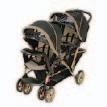







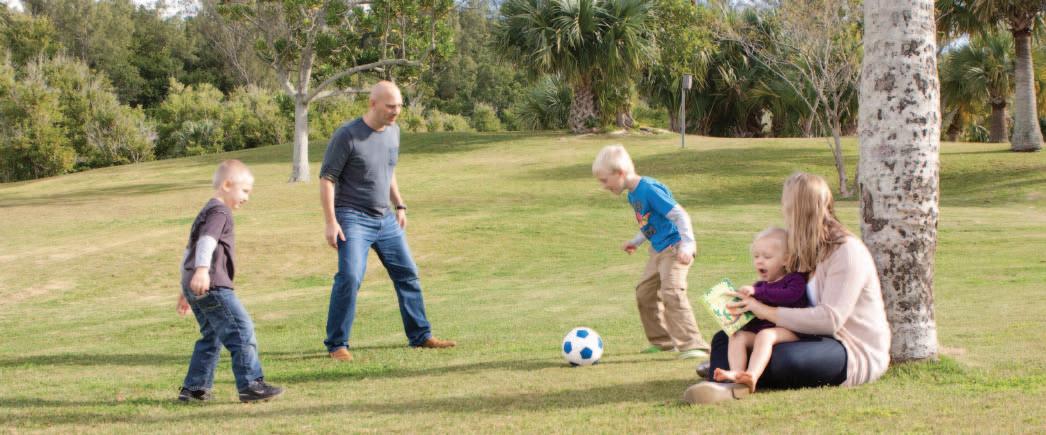 By Lt.Col. Edward Lamb
By Lt.Col. Edward Lamb
“Those who educate children well are more to be honored than they who produce them; for these only gave them life, while those the art of living well.”Aristotle

In my opinion, the most important thing a father can give his children is reverence for the Almighty. In fact, this is a duty from which a father can never be relieved. Having said that, the second most important duty a father has is that of educating his children.

It is impossible to put a value on the worth of formally educating our children. There is no question that the world demands knowledgeable and educated people to fill the multifarious careers that make society function. For education to be effective though, parents must inculcate in their children a burning desire to pursue their education to the fullest extent of their abilities. This ought to be done not simply as a means to secure financial and material success but rather, to maximize the potential of children and to fulfill their individual purpose on this planet.
By education though, I am not referring only to the formal kind that is obtained in classrooms and from textbooks, which of course, is essential to the development of our children and by extension, our society. Educating our children however, is not confined to the classroom and textbooks. It comes in many forms and we must teach our children lessons that cannot be found in a textbook. Training is a form of education and we have to train our children in the lessons of Life. I love Proverbs 22:6 which says “train up a child in the way he should go; and when he is old he will not depart from it.”
In training our children, in addition to providing them with a formal education, we have to teach life-skills and character traits that will enable them to be well-rounded and well-adjusted. These traits include common sense; social etiquette; respect, integrity and discipline – to name but a few. The adage that “knowledge is power” is very true and profound. More important, I think, is the ability to apply knowledge and that is where common sense is so vital to the
well-being of our children. To illustrate this, there is an old proverb that says “one pound of learning requires ten pounds of common sense to apply it.”

This proves that we have to place more emphasis on teaching our children “how to think” rather than “what” to think. John Dewey said it best when he said “the aim of education should be to teach us rather how to think, than what to think; rather to improve our minds, so as to enable us to think for ourselves, than to load the memory with the thoughts of other men.” Teaching our children to think for themselves, and therefore, to be self-starters, may very well be the best thing we could ever do for them.
Many of the anti-social ills we see today being demonstrated by our young people are the result of adults neglecting their duty to properly teach and train their children. I sat through some proceedings in Supreme Court recently and observed young females exhibiting terribly disrespectful and unseemly behaviour: using profanity, refusing to stand when the Judge entered and left the courtroom and generally displaying behavior that is unbecoming of a lady. Is this behavior a lack of education or lack of training; or perhaps both?
In essence, a solid education and sound training are inextricably linked to the successful development and growth of our children. As look around this village, in spite of the anti-social problems plaguing us, am filled with hope when see so many positive, pleasant and productive young people. These children and young people are obviously the products of sound teaching and training.
In closing, would like to remind all that Education is not a destination, but rather, a lifelong journey.


There is a Bermudian male rite of passage that warms my heart. Whenever I see it in action I smile, feel really good, and say a silent prayer of thanksgiving for it. Perhaps it is because my father did it with me; perhaps it is because I cannot wait to do it with my son; or just perhaps in these times, I am sensitive to fathers and sons, but I experience a powerful emotion whenever I see it.
Technically an anthropologist may call it: ‘The Bermudian father/ son mid-term break, and/or Summer vacation employment apprenticeship scheme’. What I am talking about are the times when you see sons ‘working’ with their fathers because school is on break.
We observe the rite of passage when we see a father and son together in the father’s truck; at the post office; in line at the bank; in the hardware store, or somewhere else ‘conducting business’.




Have you ever spoken to one of the sons while on the job and asked them a business question? “Is that line plumb? Are you making a deposit? Do you know what the server does? Are you the boss or the worker?” Ninety percent of the time the boy blushes, sheepishly answers, and lets you know exactly what is going on... feeling proud, with a wide smile, and some look toward their father.
If the father is self-employed, notwithstanding the lessons about servers, pipes, water deliveries, or electrical current, he is also teaching his son about responsibility as it is hard to work for oneself: to find the work, execute it well, charge your customer, and then collect the money...all the while looking out for more work.
was fortunate to have a father who was self-employed and responsible for staff. It was my rite of passage to work in the shop at every chance. The disciplines that was involved in about sacrifice, service, and job completion, have always held me in good stead. More than that however, remember the pride I felt when my father trusted me to do something all alone.
If you ask my father today if he meant to impart life lessons while working for him he would probably deny it: he had a son, he had a business, and he needed help around the place. But the lessons still came...and that is the point.
These out-of-school, on-the-job moments do not create the bond between fathers and sons, but they do complement, underlie, and solidify it.
It is like building a wall. Feeding, housing, and educating sons are like stacking concrete block; required yes, but by itself insufficient. The time in the truck, on the site, in the office, those are merely opportunities to communicate; those are the rods that are inserted in the block. Rods are a vital component to a good wall but on their own...useless.


If we merely stop at possessing block and laying rods, we are no more than genetically being a father (block), and having circumstances that give us the opportunity to spend time with our sons (rod). What is absolutely critical however is the mortar; the stuff that connects the blocks for common purpose, binds the rod to the block, and empowers the wall to stand against all comers.
This is our charge as fathers; we need to ensure that the minimum requirements of clothes, food, and shelter are guaranteed (block); we have to ensure the time we give and the chances to communicate are quality (rod); and that the values we impart and our communication of guidance and wisdom is true and honest (mortar).
If we, fathers, tell our sons what we expect of them, there’s a very good chance it will be forgotten unless they will pay some consequence for forgetting. Show our sons something and they may remember if it is something that is repeated, or if it is something in which they are interested.

However, if we involve our sons in something: why we respect their mother; why we say grace and how to say it; how to pursue our own paths and be a leader and not a follower; and how to make the decisions that make us good men, then we will have really done something well.
We need to share what causes us as men and fathers to act and react the way we do. One of my late mentors had a small cedar plaque in his kitchen and on it were the words: “We cannot control the winds but we can adjust our sails”. For years I had wondered how he overcame setbacks and betrayals, and our discussion about that plaque involved me in his decision-making, and I understood; now I adjust my sails rather than trying to beat the wind.
It is more than simply giving a fish or teaching how to fish; this is about understanding why fish are even needed at all. Our sons are learning, and when they have questions we can tell them, show them, or involve them...I recommend involving them so when they face their own challenges, at least they will have the benefit of our experiences helping them to understand, to then make a good decision, and of course to then make us proud.
Take Care, Godpa
“Tell me and I’ll forget; Show me and I may remember; Involve me and I’ll understand.”
Chinese Proverb
We couldn’t make it without the support of our advertisers . We want to say Thank You . See how many you can find
Making it in the music business is certainly a one-in-a-million shot at stardom. Yet the band Paper Cutouts certainly seem well on their way after winning the Bermuda’s Youth Got Talent (BYGT) competition last spring. Nathan Susman, 17, and his brother Drew, 16, were students in the International Baccalaureate programme at the Bermuda High School for Girls. Where they met Harley Sapsford and Emerson Krebs, also both 17. “Drew and I moved back to Bermuda to go to school,” explained Nathan, who were then living in Canada, “and I met Emerson. We discovered that we had the exact same taste in music.”

The pair began ‘messing around’ with music, and began to work on creating a band, when they found Harley about four years ago; after a mini series of auditions for a vocalist.


The trio would play together, but they still weren’t complete – they didn’t have a regular drummer. That is, until they realised that Nathan’s younger brother, Drew, could really handle the drums. Never having taken a drum lesson in his life, Drew had mastered the drum set on the video game “Guitar Hero”, so the boys thought they would give him a chance – a move they were very glad to have made.
Other than regular practices, the boys really hadn’t had more than a handful of gigs when one of the mom’s saw the advertisement for the
 By Sara Westhead
By Sara Westhead
BYGT competition in the paper and recommended the boys tryout. “We sort of put the whole thing on the back-burner,” explained Harley. Being that the suggestion was from a parent, the boys weren’t really sure it was the sort of thing for them. They did eventually, albeit at the last minute, decided they would give it a shot. “We didn’t know what to expect,” shared Drew. “There was a lot of talent. What were the chances?” Being that it was a general talent competition, the boys really didn’t expect much, though they did think that if they could make it into the top 20 that would be really good. Needless to say, their worries were in vain. According to Drew, “The win couldn’t have come at a better time.” Since the win, Paper Cutouts has really been growing in leaps in bounds, with more gigs since the win than the band had ever had in the past. In June alone, they had eight gigs, including their debut at Harbour Nights on June 27, a move that helped them really feel they had ‘made it’ in local music. The band was also on the line-up for the Summer Sunday’s concert on July 1.
In addition to a lot of playing, the boys have spent the summer working on a mixed tape, which will be home-recorded and homeproduced. The music will include a lot of pop-punk, with a mix of E-Mo and acoustic, and will hopefully bring a more mature style of
instrumentation and lyrics. They hope to be able to give the album to people at no cost.

“I personally didn’t have any formal lessons for vocals and guitar,” shared Harley, who did, however, pick up a few tips on the guitar from his uncle. “My advice – don’t think too hard, just go for it! If you have a group of guys that you like to do music with and you’ve got your own sound... go one and appear confident, even if you don’t feel like it. You have to believe in your music.”


Drew’s advice: “Be yourself with it. As a band, cater to what you want to do.”


Nathan, Harley and Emerson have all just graduated and will be attending the University of Western Ontario in the fall, while Drew still has one more year in the IB programme. Nathan is planning on studying Economics and Social Science, yet hopes to also pursue some training in Theatre and Music, while Harley is looking at an Arts and Humanities degree. Drew eventually hopes to become an English teacher. The boys really see that the BYGT win validated their pursuits in the eyes of their parents, who put up with all the ‘noise’ of practices, drove them everywhere and were simply just there for them. “Huge credit to all our parents” said Nathan, “who drive us everywhere. Props to the Krebs household, as well,” who opened their home for the boys to practice.
When you ask 12 year old San-tze Burgess what he would like to be when he grows up, he very confidently says, “A professional footballer or a 100m sprinter!” Young San-tze currently resides in the United Kingdom, where he attends a boarding school geared for nurturing athletes. Hailing from Southampton, San-tze was the 2011 Recipient of the “Most Valuable Player” and “Best Defender” award at the Under 12 Devonshire Colts prize giving before leaving for the UK to attend school. While in Bermuda, San-tze is an active member of the Bermuda Brazilian Football School, where he has travelled to Holland, Germany and England to participate in various tournaments with the BBFS. Additionally, during school breaks, San-tze has attended numerous overseas football camps including the Bobby Charlton Soccer Academy in Manchester, UK and the Queens Park Rangers (“QPR”) Camp in London. Although not residing in Bermuda, San-tze has also been selected for the under 12 National Team in Bermuda.
Presently, San-tze plays football for both his school and his local club team, receiving “Manager’s Player of the Year” award for his club team for the 2011/2012 season. If you ask San-tze, who his favourite footballer is, he would say his dad, Shannon Burgess (former Bermuda National Squad Captain & Devonshire Colts Captain), with Gareth Bale (Tottenham Hotspur) as a close second.

Additionally, San-tze loves to compete in the 100m Sprint and 4x100m relay. San-tze has competed in Borough Athletics in Uxbridge in Triple Jump, 100m and relay. He recently was in Bermuda to enjoy the Carifta Games and to gain a better perspective of what it really takes to make this passion a reality. You will also find San-tze on You Tube often, analysing and studying Usain Bolt, in admiration.
Who says that Bermudian’s can’t compete and win on the global stage? Stay tuned as this young star on the rise has been selected as a “reserve” for the England National Schools under 12 team, who will be representing England in Warsaw, Poland in September. In the words of his biggest fan and proud mum (Sakina Darrell), “chin up and chest out Burge!”
Young Burgess is determined to leave his footprint on the global stage........
Book or E-Reader Pyramid rest $46.95, Relaxation CDs $24.95 each

Miracle Ball Method book & balls for Pregnancy $25.25

Perfect Baby Names book $20.25, Baby Journal from Birth to 3 Years $25.25


Now I’m Reading PhonicsLevel Reading Sets

Price: $22.25 per set
All of these products shown are available at:
Cloud 9 Kids‘ Character Under Construction’ Teaches and reinforces values for you and your family. Also instills good thoughts, engages good behavior and boosts self- esteem. Books - $12.25

Cloud 9 Kids‘ T-shirts $22.50
‘Life Is A Special Occasion’ with Hallmark!

An interactive story book & plush. A ‘Dr. Toy’ winner of 10 Best Tech Products, Prices: Book: $14.45 or Book & Plush set $43.45
Photography by Lana Bull
Cloud 9 Kids‘ Caps $18.95

Assorted floor puzzles from Crocodile Creek. Priced from $11.25-16.25

Little Miss & Mr. Men Magnetic Bookmarks & Key-chains Prices $5.45- $8.95

Back-To-School
Assorted Stainless Steel drink thermos $19.95, Assorted insulated lunch bags $16.75, Squeak Me Shoes $43.50


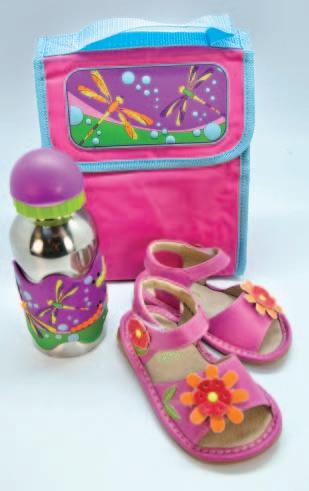
Webkinz –Interactive Educational & Life Skills Plush Each Webkinz Pet comes with a unique Secret Code. Enter code at webkinz.com and bring your pet to life online!


For The Future Reader and Parents

Baby Bib $10.75, Canvas Carry Bag $24.50, Key Chain $11.25, Luggage Tag $15.75, Passport Cover $26.50, Travel Pouch $23.50, Notebook $18.75
For Mom & Baby –from BUILT NY
Comfy Bib $8.95, Single Bottle Tote $15.95, Double Bottle Tote $19.25, Soho Diaper Bag $97.95


If you would like to support a young person in achieving and sustaining their goals, can commit to supporting a young person as they develop a future beyond their present expectations and are open to empower yourself to produce a new set of behaviors, actions and results in your life, then MIRRORS is looking for you.
• Are you willing to work with young people?
• Are you willing to empower our youth to increase positive attitudes?

• Are you willing to build relationships with our young people?
• Are you willing to make a stand in our community?
“Having a committed partner helped me to see things from a different perspective. Being able to do so enabled me to think first before reacting negatively to different situations.”
– Michéla Outerbridge, 2010 participant






